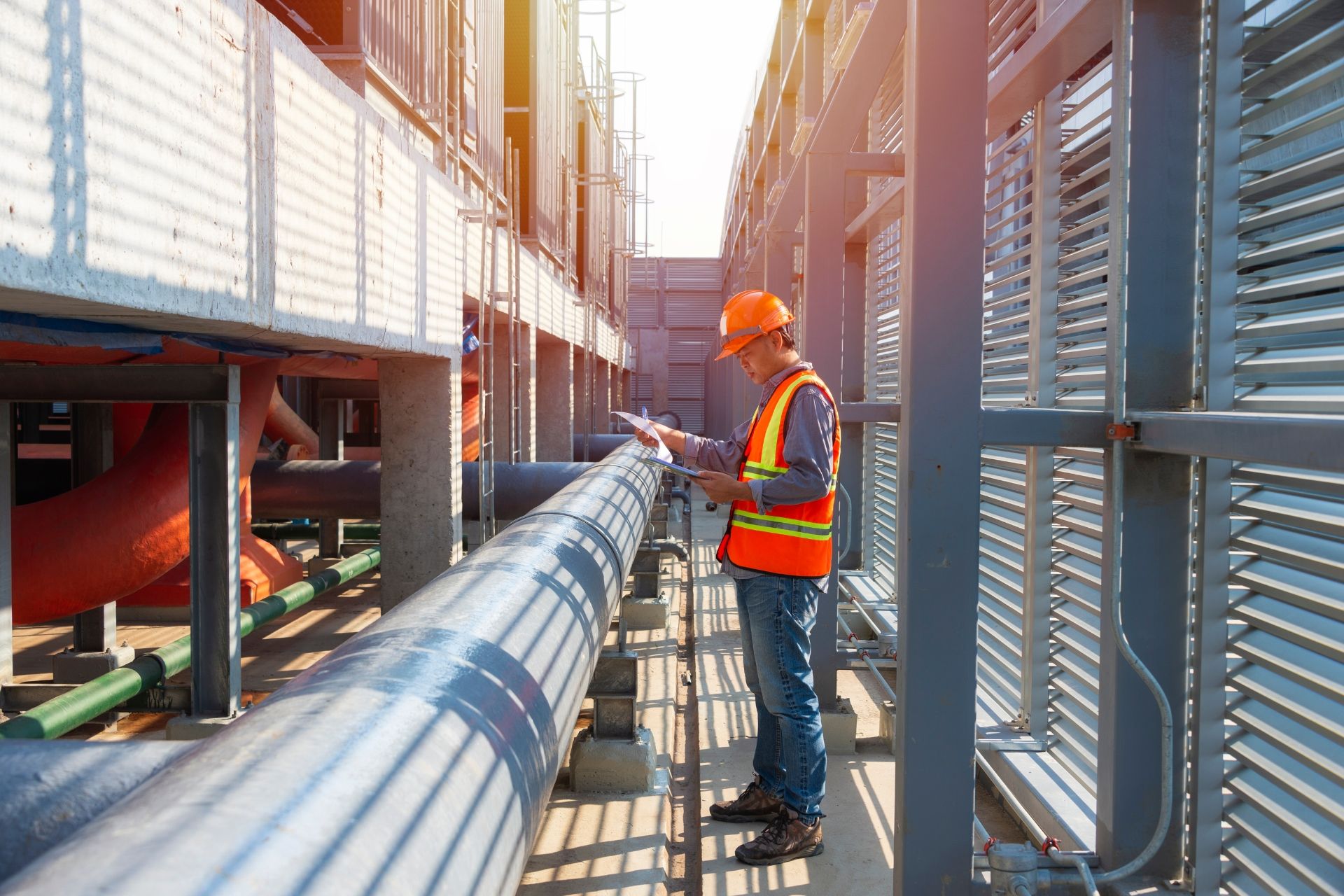Engineering Industry Insights
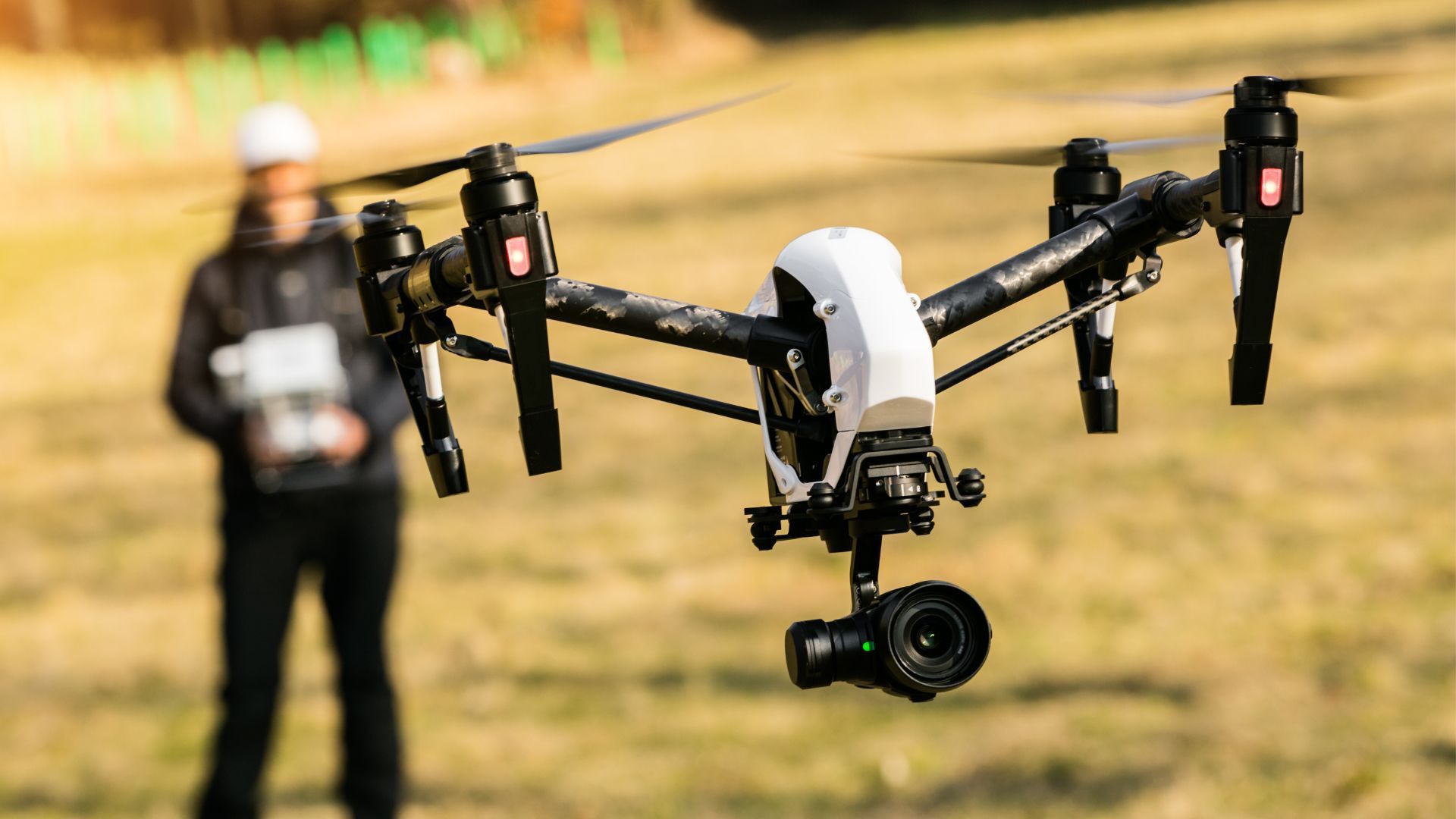
Technology is changing nearly every industry, and civil engineering is no exception. Today, robotics is playing a bigger role in how engineers and surveyors plan, design, and build the world around us. From land development to bridge inspections, robotics is helping professionals work faster, safer, and with greater accuracy. At REGA Engineering , we’ve always been committed to using innovative tools to deliver reliable results. As robotics becomes more common in surveying and civil engineering, we’re excited to see how these tools can make projects smoother for both our team and our clients. Robotics in Surveying: Smarter Land Measurements Surveying is the foundation of almost every construction project. Traditionally, surveyors had to spend hours in the field with measuring tools, carefully marking boundaries and collecting data. Today, robotics is making that process quicker and more accurate. Robotic surveying equipment can scan land automatically, creating detailed maps and 3D models. This means engineers have better information when designing roads, subdivisions, and other projects. For landowners and developers, that translates to fewer delays and fewer costly mistakes. In areas with steep slopes, wetlands, or uneven ground, robotic survey equipment and drones can safely capture information that would be time-consuming or even unsafe for people to gather. This expands the possibilities for projects in challenging locations and reduces the chance of injury for workers. Making Inspections Safer and Faster Robotics is also being used to inspect existing structures like bridges, highways, and drainage systems. Instead of sending workers into potentially dangerous areas, robots and drones can gather the data needed. They can spot cracks, signs of wear, or other issues before they turn into expensive problems. For civil engineers, these tools mean safer working conditions and quicker inspections. For communities, it means safer infrastructure and repairs that can be made before small problems grow. Faster inspections also mean communities don’t have to deal with long closures or delays. Bridges, roads, and other structures can be checked more frequently, which helps extend their lifespan and reduces unexpected breakdowns that disrupt daily life. Drones and Aerial Mapping You may have already seen drones flying over construction sites. These are a form of aerial robotics, and they’re becoming an essential part of surveying and engineering. Drones can quickly map large areas of land, track construction progress, and even provide thermal images to show changes that can’t be seen from the ground. At REGA Engineering, we’ve already put aerial drone photography to work for surveying, planning, and inspections. As drones continue to advance, their role in civil engineering will only keep growing. Another advantage of drones is how they improve communication. Aerial maps and images can be shared directly with property owners, city planners, and contractors. Instead of relying only on technical drawings, clients can actually see the project area from above, making it easier to understand the scope and progress of the work. Why Robotics Matters in Civil Engineering The benefits of robotics in surveying and engineering are clear: Better accuracy : Robots reduce human error and collect precise data. Faster results : Automated tools speed up surveys and inspections. Improved safety : Fewer people are needed in hazardous environments. Lower costs : Efficiency leads to savings in time, labor, and resources. These advantages help communities get better infrastructure, help businesses save money, and help engineers focus on solving problems rather than spending extra time collecting data. Challenges Still Remain Of course, robotics isn’t without challenges. Equipment can be costly, and teams need training to use it effectively. But as the technology becomes more affordable and user-friendly, more engineering and surveying firms are making robotics part of their everyday work. Final Thoughts The growing role of robotics in surveying and civil engineering shows how quickly the industry is evolving. From robotic survey equipment to drones and automated inspection tools, these technologies are shaping the future of construction and infrastructure. At REGA Engineering , we’re proud to combine proven experience with new technology to serve our clients across the Midwest. Whether you need land surveying, site planning, or civil engineering services, our team is ready to deliver solutions that are accurate, efficient, and future-focused. Want to learn how robotics can improve your next project? Contact REGA Engineering today and let’s build the future together.

Every successful construction project starts with more than just a good idea, but it starts with a well-prepared site. From grading and drainage to utility coordination and regulatory approvals, site development planning lays the essential groundwork for a smooth, cost-effective, and compliant building process. At REGA Engineering Group , serving Lincoln, Nebraska and beyond, we specialize in comprehensive site development services that turn raw land into ready-to-build property. In this blog, we’ll explore the critical role of site development planning and why investing in it early helps prevent costly delays and complications later. What Is Site Development Planning? Site development planning is the process of preparing a property for construction. This includes assessing the physical, environmental, and regulatory characteristics of the site and designing the infrastructure required for successful development. At REGA, our civil engineers work with developers, architects, and contractors to manage everything from site grading and stormwater management to utility design, access planning, and local permitting. Explore our services here . Why Is Site Development So Important? Skipping or rushing through site development can lead to serious issues like unstable ground, improper drainage, utility conflicts, or noncompliance with zoning laws. Here’s why proper planning matters: 1. Improves Project Efficiency and Budget Control A well-thought-out site plan helps identify potential challenges before construction begins, saving time and money. With detailed topographical data and infrastructure plans, developers can avoid unexpected change orders, delays, or redesigns mid-project. REGA’s site development process is built around efficient project execution and practical, buildable solutions. 2. Ensures Compliance with Local Codes and Regulations Every municipality has its own set of development standards, zoning requirements, and permitting procedures. Failure to comply can result in stop-work orders or costly redesigns. Our team has years of experience navigating local and state regulatory environments, ensuring your project meets all necessary requirements from day one. 3. Supports Safe and Functional Infrastructure Site development isn’t just about getting a project off the ground, but it’s about making sure the result is functional and sustainable. This includes designing: Safe and accessible roadways and entrances Proper utility layout for water, sewer, gas, and electric Grading and drainage plans to prevent flooding and erosion Parking and pedestrian infrastructure that meets ADA standards At REGA, we take a holistic view of site performance to ensure both immediate and long-term usability. 4. Protects Against Environmental Risks Environmental considerations like stormwater runoff, soil erosion, and wetland impacts are becoming increasingly important in development projects. A strong site development plan addresses these issues upfront with solutions such as: Stormwater detention or retention basins Erosion control measures Green infrastructure or low-impact design options This not only protects the surrounding environment but also supports permit approval and community support. 5. Lays the Groundwork for Construction Phasing For larger projects, site development planning helps organize construction into manageable phases. This includes staging areas, access points, and timelines that align with funding or occupancy goals. REGA works closely with project stakeholders to develop site plans that are scalable, flexible, and construction ready. Partner with REGA for Comprehensive Site Development At REGA Engineering Group, our team brings over 20 years of experience in civil and site engineering throughout the Midwest. Whether you’re planning a commercial facility, subdivision, or industrial site, we provide the technical expertise, regulatory knowledge, and responsive service needed to turn your vision into reality. Start Smart and Build Better A well-developed site is the foundation of a successful construction project. With REGA Engineering Group by your side, you can break ground with confidence knowing every inch of your site has been planned with precision, safety, and long-term performance in mind. Contact us now!
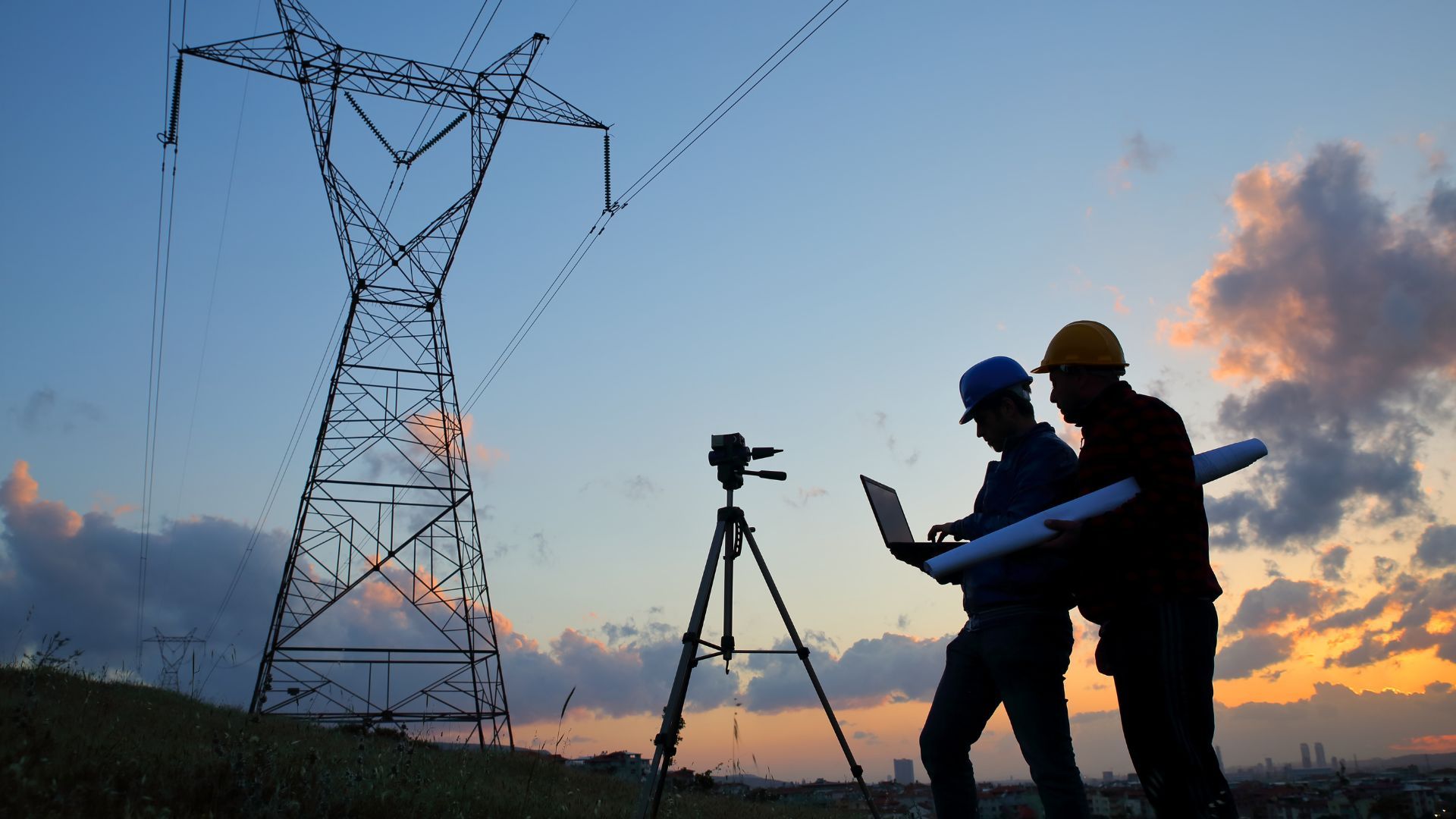
Modern civil engineering is no longer just about concrete and steel; it’s about partnering with nature to build resilient infrastructure. At REGA Engineering , we champion this holistic approach, integrating ecological principles into every stage of design and development. From green infrastructure to environmental restoration, our team brings nature and engineering into harmony for stronger, more sustainable communities. Bridging Civil Engineering and Ecology Traditionally, engineering meant reshaping or displacing natural systems. Today, the trend is shifting toward eco-conscious design, which is what we refer to as green infrastructure and environmental restoration. These nature-first strategies not only benefit the environment, but also reduce maintenance costs, improve storm resilience, and enhance long-term project success. Read more about our green infrastructure capabilities in our recent blog: Embracing Green Infrastructure Core Areas of Nature-Centric Design at REGA 1. Landscape Architecture That Works With Nature Our Landscape Architecture solutions go beyond aesthetics. They integrate stormwater management, erosion control, and plantings with ecological benefit, supporting native species and local ecosystems. 2. Civil Engineering with Eco-Friendly Infrastructure Balancing roads, drainage, and utilities with conservation goals is one of our specialties. Whether using permeable pavements or natural detention basins, our Civil Engineering services ensure infrastructure supports, not degrades, surrounding habitats. 3. Sustainable Irrigation & Smart Water Use We design irrigation systems that are both effective and resource-conscious, emphasizing smart watering controls, drought-tolerant plantings, and minimal water waste. These solutions benefit landscapes and the broader ecosystem. 4. Environmental Restoration & Investigative Science For projects needing ecological recovery, our investigative engineering team applies data‑driven methods to restore systems, think wetland reconstruction, habitat replanting, and soil remediation. Collaborating with REGA: A Client-Focused, Team-Driven Approach At REGA Engineering, collaboration isn’t just part of the process; it’s the foundation of everything we do. Our team brings together decades of civil engineering, surveying, and landscape architecture experience to deliver results that are practical, environmentally responsible, and tailored to your goals. Here’s what partnering with REGA looks like: Personalized Consultation & Understanding Your Vision We start by listening. Whether it’s a public works project, private development, or site restoration, we take time to understand your needs, timelines, and budget—ensuring a shared vision from day one. Integrated Teamwork Across Disciplines Our in-house professionals , including civil engineers, landscape architects, and surveyors, work closely together, streamlining communication and ensuring every detail aligns across services. Solution-Oriented Design We approach each challenge with creativity and real-world insight. From stormwater management to native landscaping, our designs are shaped by functionality, long-term maintenance, and environmental impact. Responsive Communication & Trusted Partnerships Our clients return to REGA because of our reliability and responsiveness. We pride ourselves on clear, honest communication. Keeping you informed and involved throughout every phase. Commitment to Excellence from Start to Finish From initial survey through final inspection, our team remains focused on delivering high-quality results with professionalism and integrity. At REGA, our collaborative, hands-on approach is what sets us apart. We don’t just design for nature—we design with people in mind, too. Project Highlights: Nature-First Engineering in Action Stormwater Management Systems: Bioswales, permeable pavements, and wetland basins integrated into private and public developments. Revegetation & Habitat Projects: Restored degraded areas using native plant communities—supporting local fauna and pollinators. Water-Smart Landscape Design: Smart irrigation paired with native plantings to optimize water use and reduce runoff. These exemplify how we design for nature without compromising functionality or budget. Partner With the Experts in Sustainable Design At REGA Engineering, our values of reliability, responsiveness, and collaboration extend to thoughtful, nature-respecting design. Whether you’re planning a residential subdivision, commercial development, or public park, we blend civil expertise with ecological stewardship. Learn more about our wide range of services and how we tailor them to foster environmental integration. Ready to explore a sustainability-focused project? Contact us to start the conversation.
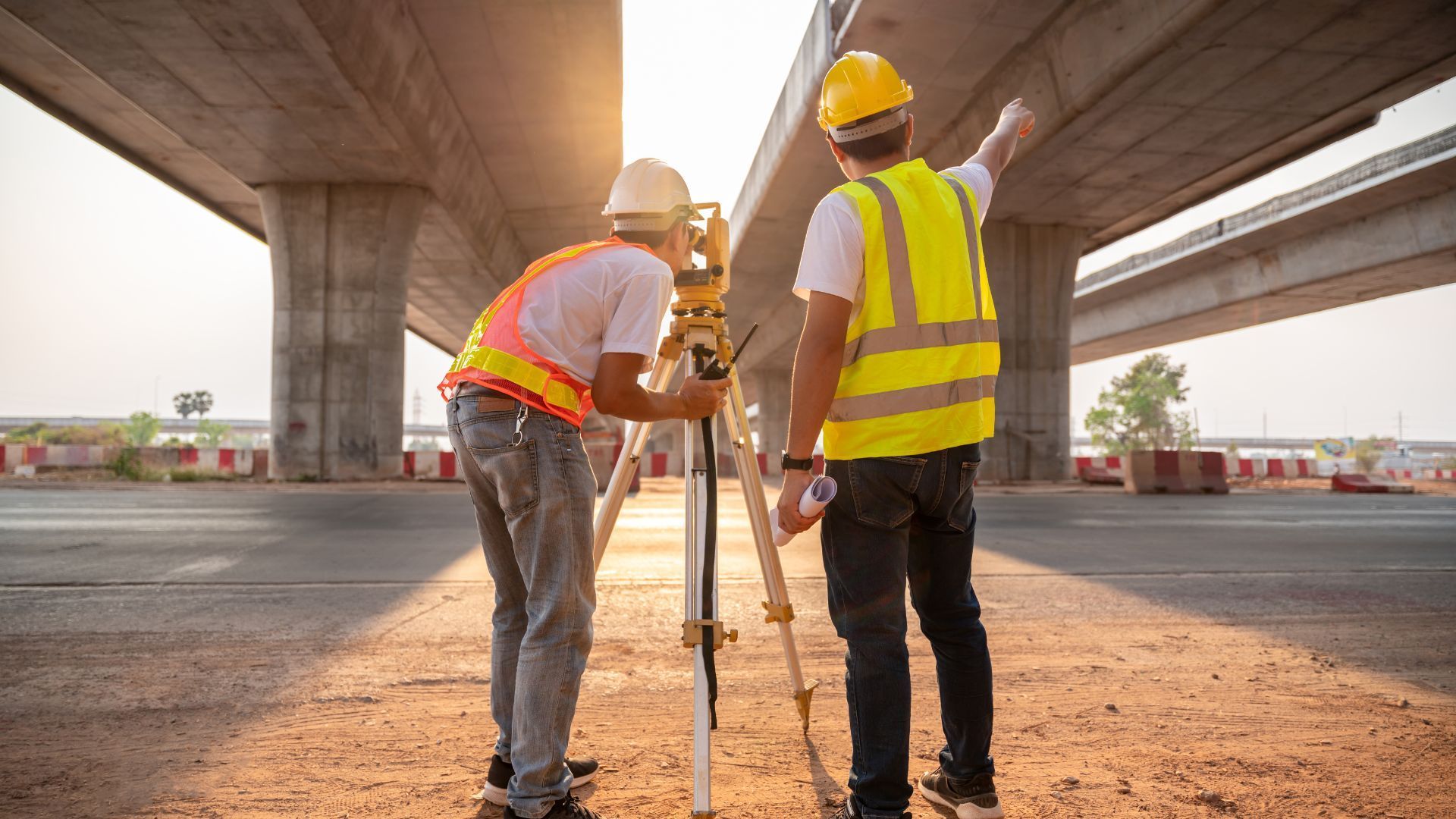
The global transition to renewable energy is not only reshaping the energy sector—it’s revolutionizing civil engineering as well. As sustainability becomes a top priority for governments, businesses, and communities, the design and construction of infrastructure must adapt to meet new environmental, regulatory, and technological demands. At REGA Engineering Group , we’re helping clients lead the way in building a cleaner, more sustainable future by integrating renewable energy solutions into every stage of the engineering and development process. Renewable Energy’s Role in Today’s Infrastructure Civil engineering has always been about building solutions for human needs. In the past, that meant roads, bridges, buildings, and water systems. Today, it includes designing the physical infrastructure that supports renewable energy sources like solar farms, wind energy, and geothermal systems. For example, large-scale solar installations require extensive civil engineering support—from grading and drainage to foundation design and utility coordination. Wind farms must be placed strategically, often in remote or challenging environments, requiring skilled site planning and road access development. Whether designing the foundation for solar panel arrays or integrating electric vehicle (EV) charging infrastructure into new developments, civil engineers now play a critical role in supporting the shift toward clean energy. Sustainable Site Design and Planning Sustainable site design is at the core of renewable infrastructure. It requires thoughtful consideration of environmental impacts, land use, resource efficiency, and long-term maintenance. At REGA Engineering Group, our planning services are developed with sustainability in mind. We work closely with clients to create site plans that incorporate renewable energy features such as solar orientation, battery storage locations, EV-ready parking lots, and green infrastructure like bioswales and rain gardens to support stormwater management. When integrated early in the planning process, these features can significantly reduce long-term costs and environmental impact, helping projects meet or exceed regulatory compliance and green building standards. Leveraging Data-Driven Surveying and Drone Technology Modern surveying techniques are essential to the accurate and efficient development of renewable energy infrastructure. Our surveying services provide high-precision data used to guide grading, layout, and utility coordination, especially for large or complex renewable energy projects. In addition, REGA Engineering Group utilizes aerial drone photography to collect detailed site imagery, elevation models, and thermal maps. These tools offer unparalleled accuracy for assessing topography, sun exposure, and potential obstructions—key factors when planning renewable installations. Drone imagery also plays a valuable role in project documentation, inspection, and ongoing maintenance, making it a smart investment for project success. Supporting Green Spaces with Sustainable Landscape Design Renewable infrastructure doesn’t exist in isolation—it interacts with the surrounding environment. Our landscape architecture services are designed to complement renewable energy systems by using native, drought-tolerant plants, reducing heat island effects, and incorporating elements like solar lighting and permeable pavers. Thoughtful landscape design enhances both the performance and aesthetics of renewable energy sites. For example, ground cover vegetation under solar panels helps control erosion and reduce dust accumulation, improving long-term performance and durability. Energy-Efficient Irrigation Systems Sustainable water management is another area where renewable thinking is transforming traditional design. At REGA, we integrate smart irrigation systems that can be powered by solar energy and controlled remotely, minimizing water waste and energy consumption. These systems are ideal for large commercial developments, parks, and agricultural projects that prioritize both environmental responsibility and cost-efficiency. The Future of Civil Engineering is Renewable As federal and state governments continue to roll out funding, tax credits, and infrastructure incentives for renewable energy, the demand for qualified civil engineering firms capable of executing these complex projects is growing rapidly. At REGA Engineering Group, we’re proud to be at the forefront of this evolution. Our multidisciplinary team provides end-to-end support for projects that require integration of renewable energy technologies—from site planning and surveying to civil design, landscape architecture, and drone imaging. Our commitment to sustainable engineering ensures that our clients stay ahead of the curve—and that our communities move closer to a clean energy future. Let’s Build a Sustainable Future—Together If you’re planning a development that includes renewable energy infrastructure, partner with a firm that understands both the opportunities and challenges. REGA Engineering Group is ready to help you design smarter, build better, and lead sustainably. Explore our services or contact us today to discuss your project needs.
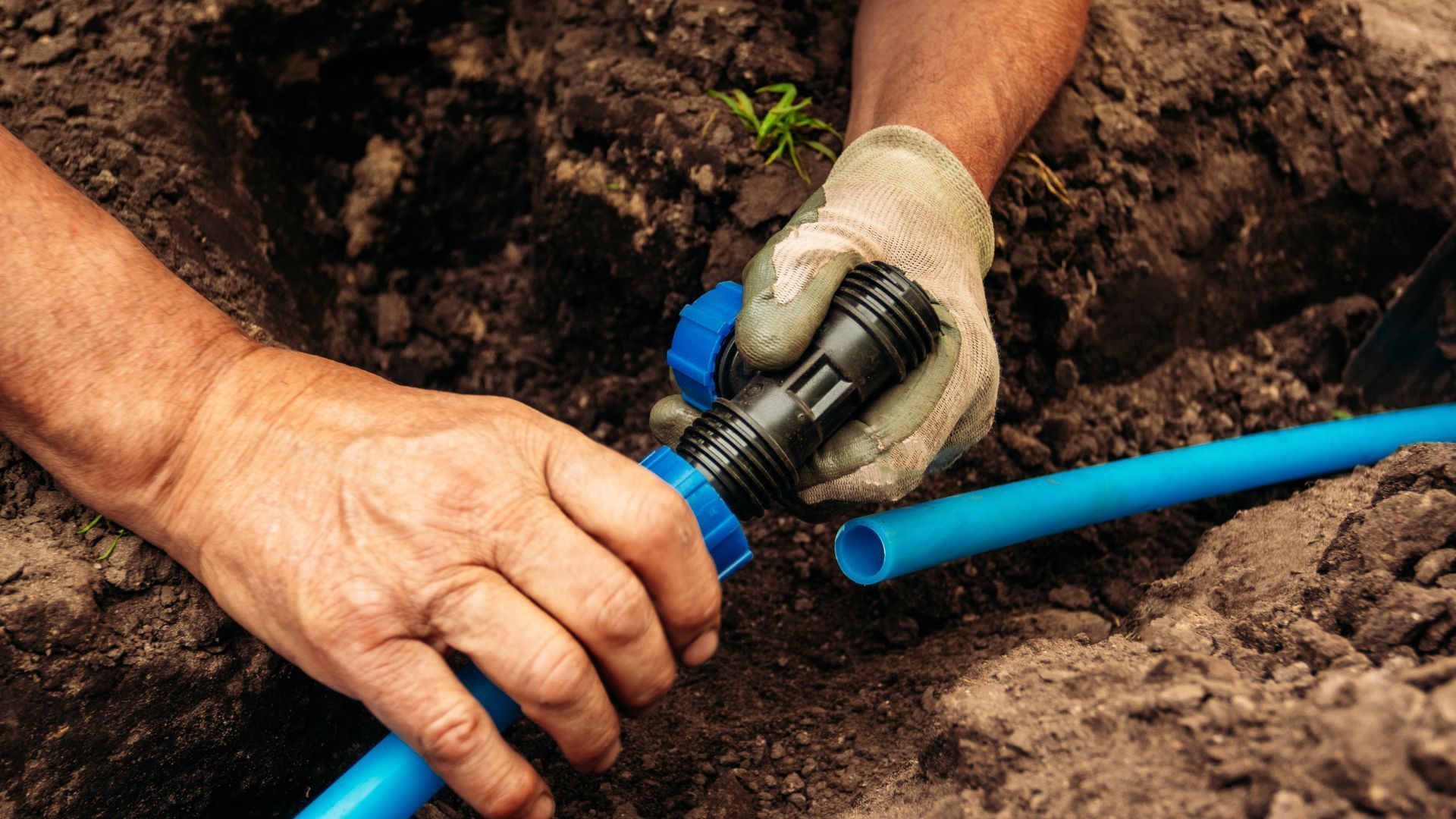
Stormwater might seem harmless at first glance, but in rapidly growing urban areas, it’s one of the leading causes of flooding, erosion, and water pollution. At REGA Engineering Group, we believe that solving these challenges requires more than traditional drainage systems —it requires a shift toward green infrastructure that works with nature, not against it. In this blog, we explore how civil engineers are using innovative techniques like bioswales , rain gardens , and permeable pavements to manage stormwater sustainably, protect local ecosystems, and create resilient communities. What Is Green Infrastructure? Green infrastructure is a design approach that uses natural systems and processes to manage water and improve urban environments. Unlike conventional infrastructure—which typically moves stormwater away through pipes and drains—green solutions slow it down, filter it, and allow it to soak naturally into the ground. This not only helps prevent flooding and water pollution, but also brings aesthetic and ecological benefits to communities. Bioswales: Nature’s Drainage Ditches A bioswale is a vegetated, shallow channel designed to slow and filter stormwater runoff. By using a combination of soil, plants, and sometimes engineered substrates, bioswales help capture pollutants like oil, heavy metals, and sediment before they reach rivers and streams. Bioswales are especially useful in: Parking lots Roadside medians Business complexes Residential developments At REGA Engineering Group, we incorporate bioswales into site designs where both environmental performance and visual appeal are a priority. Rain Gardens: Small-Scale Stormwater Heroes Rain gardens are shallow, landscaped depressions that capture runoff from roofs, driveways, and sidewalks. Planted with native grasses, shrubs, and flowers, they absorb rainwater and filter out contaminants while providing habitat for pollinators and wildlife. Key benefits of rain gardens include: Reducing localized flooding Improving groundwater recharge Enhancing curb appeal and property value Whether it’s for a single-family home or a commercial site, rain gardens are a low-cost, high-impact solution that supports both stormwater management and environmental stewardship. Permeable Pavements: Letting the Ground Breathe Unlike traditional asphalt or concrete, permeable pavements allow water to pass through the surface and into a gravel or sand base below. This process reduces runoff, limits erosion, and helps filter pollutants before they reach the water table. Permeable paving is ideal for: Sidewalks Driveways Parking lots Low-traffic roadways REGA’s civil engineering team uses permeable paving in projects where both performance and sustainability are top priorities—especially in areas prone to frequent rainfall or flash flooding. A Smarter, Greener Path Forward Green infrastructure isn’t just about managing stormwater—it's about rethinking how we design the built environment. By integrating bioswales, rain gardens, and permeable pavements into urban and suburban landscapes, we can reduce our environmental footprint, support biodiversity, and create more resilient communities. At REGA Engineering Group, we’re committed to engineering solutions that serve both people and the planet. If you’re planning a new development or looking to upgrade your site’s stormwater system, we’d love to help you build sustainably. Contact us today to learn how green infrastructure can benefit your next project.

As urbanization accelerates, the demand for sustainable civil engineering solutions has never been greater. Green infrastructure offers an environmentally responsible approach to urban planning and development, reducing ecological footprints while enhancing resilience and livability. By integrating natural systems with engineered solutions, civil engineers can create more sustainable cities that effectively manage water, reduce pollution, and support biodiversity. What is Green Infrastructure? Green infrastructure refers to the strategic use of natural processes and ecosystems to address urban and environmental challenges. Unlike traditional gray infrastructure , which relies on concrete and pipes, green infrastructure incorporates vegetation, soil, and natural landscapes to provide essential services such as stormwater management, air purification, and temperature regulation. Common Green Infrastructure Solutions in Civil Engineering Green infrastructure solutions are transforming urban landscapes by promoting sustainability and resilience. Here are some of the most effective implementations: 1. Permeable Pavements Permeable pavements allow water to filter through surfaces, reducing runoff and preventing flooding. These materials, including porous asphalt, permeable concrete, and interlocking pavers, help replenish groundwater while minimizing erosion and pollution. 2. Green Roofs & Walls Rooftop vegetation and vertical gardens provide insulation, reduce urban heat islands, and improve air quality. Green roofs help manage stormwater by absorbing rainfall, while green walls enhance aesthetics and biodiversity in urban spaces. 3. Rain Gardens & Bioswales Designed to capture and filter stormwater, rain gardens and bioswales reduce runoff and remove pollutants before water enters natural waterways. These vegetated systems are effective for managing heavy rainfall and enhancing urban green spaces. 4. Sustainable Urban Drainage Systems (SUDS) SUDS mimic natural hydrological processes by using retention ponds, constructed wetlands, and infiltration basins to slow down and treat stormwater. These systems help prevent flooding and improve water quality. 5. Recycled & Renewable Materials The use of sustainable building materials, such as recycled concrete, reclaimed wood, and bio-based plastics, minimizes environmental impact and promotes a circular economy. Civil engineers are increasingly adopting these materials in infrastructure projects to reduce carbon footprints. 6. Smart Water Management Systems Advanced sensor technology and IoT-enabled water systems optimize water usage and improve conservation efforts. Smart irrigation , leak detection, and real-time monitoring contribute to efficient and sustainable water management in urban settings. Benefits of Green Infrastructure in Civil Engineering The adoption of green infrastructure offers a wide range of benefits, including: Environmental Protection – Reduces carbon emissions, improves air and water quality, and preserves natural ecosystems. Flood Mitigation – Enhances stormwater management, reduces flooding risks, and minimizes strain on drainage systems. Cost Savings – Decreases long-term maintenance costs and enhances energy efficiency. Improved Public Health – Promotes cleaner air, cooler temperatures, and increased green space for communities. Enhanced Aesthetic & Property Value – Beautifies urban areas and increases real estate desirability. The Future of Sustainable Civil Engineering As climate change and urbanization continue to shape the built environment, green infrastructure is becoming an integral part of civil engineering. Governments, developers, and engineering firms are increasingly prioritizing sustainable development practices that align with environmental regulations and community needs. Embracing green infrastructure is essential for building resilient, sustainable cities. By incorporating natural elements into urban planning and civil engineering, we can create infrastructure that benefits both people and the planet. Contact Rega Engineering today to learn how our innovative green infrastructure solutions can help make your next project more sustainable.
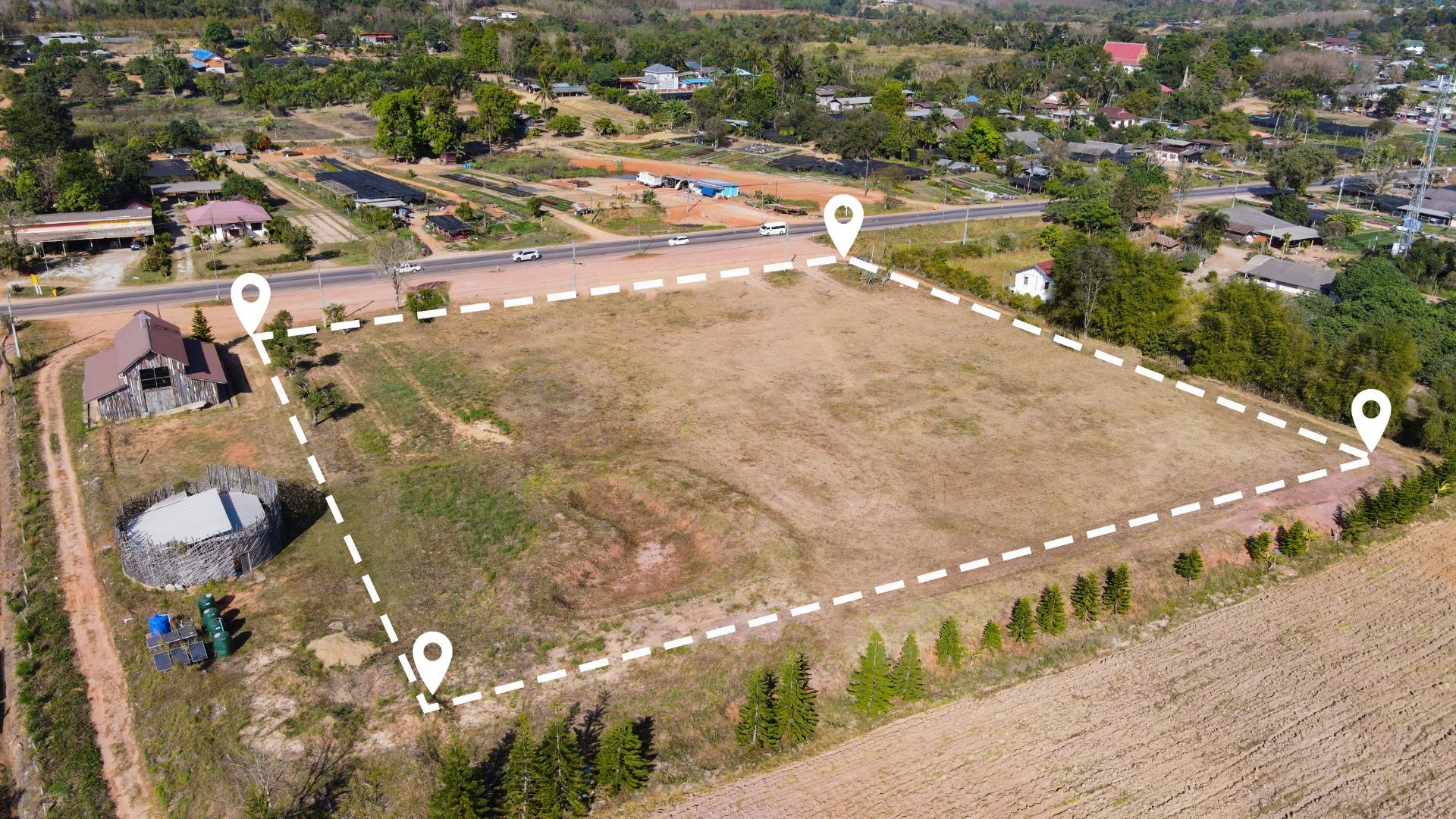
Land development is a complex process that requires careful planning, design, and coordination between various stakeholders. Whether it’s for residential or commercial purposes, developers must navigate numerous challenges to ensure the success of a project. At Rega Engineering, we understand these hurdles and provide expert solutions to help overcome them. In this blog, we will explore some of the most common land development challenges and how to overcome them. 1. Zoning and Land Use Regulations Challenge: Zoning laws and land use regulations are crucial to land development but can often be confusing or restrictive. Developers may encounter issues when the land they plan to develop is not zoned for their intended use, or when local regulations impose limitations on building size, density, or use. Solution : The key to overcoming zoning challenges is thorough research and collaboration with local planning authorities early in the process. Understanding the local zoning ordinances and working with a skilled team of planners and engineers can help you navigate these complexities. In some cases, zoning variances or re-zoning applications may be necessary, and having a knowledgeable consultant like Rega Engineering can streamline this process. 2. Environmental Concerns and Permitting Challenge: Environmental issues such as wetlands, floodplains, endangered species habitats, and stormwater runoff can pose significant challenges during land development. Obtaining the necessary permits and ensuring compliance with environmental regulations can delay projects and increase costs. Solution: Early environmental assessments are essential to identifying potential issues and developing strategies to mitigate them. Rega Engineering’s team can conduct environmental site assessments, assist with the preparation of environmental impact statements, and help navigate the permitting process. Proactive environmental planning and sustainable development , such as designing with green infrastructure or low-impact development techniques, can help minimize disruptions and meet regulatory requirements. 3. Topography and Soil Conditions Challenge: The topography and soil conditions of a site can dramatically affect the feasibility and cost of land development. Slopes, unstable soils, or the presence of bedrock can complicate excavation, foundation construction, and stormwater management. Solution: Conducting thorough site investigations and geotechnical studies is essential to understanding the site's characteristics. Once soil conditions and topography are assessed, the team can adapt the design to meet the challenges, whether through specialized foundation designs, retaining walls, or adjusting the grading plan. By engaging a team with experience in geotechnical engineering, developers can minimize costly changes and avoid construction delays. 4. Infrastructure and Utility Availability Challenge: Many land development projects require access to essential infrastructure like roads, water, sewer systems, and electricity. In some cases, these utilities may not be available or may need to be upgraded, leading to increased costs and delays. Solution: To address infrastructure challenges, it’s important to evaluate the availability of utilities at the outset of the project. If necessary, developers can work with utility providers to coordinate the installation or upgrading of systems. Rega Engineering can also assist with designing infrastructure that meets the project's needs and complies with local standards, ensuring that all necessary connections are in place before construction begins. 5. Community and Stakeholder Engagement Challenge: Land development projects can sometimes meet with resistance from local communities, neighboring property owners, or other stakeholders. Concerns about traffic, environmental impact, or changes to the community's character can delay or even halt projects. Solution: Effective communication is essential to overcoming this challenge. Engaging with the community early in the process through public meetings, informational sessions, or surveys can help address concerns and gather feedback. By incorporating community input into the design process, developers can find solutions that meet both project goals and community needs. Additionally, Rega Engineering helps developers build a strong case for their projects by showcasing the positive impacts of development on local economies, infrastructure, and quality of life. 6. Budget and Cost Management Challenge: Land development is costly, and unexpected expenses can arise throughout the process. Construction delays, regulatory hurdles, and unforeseen site conditions can all lead to budget overruns. Solution: Careful project management, cost estimating, and budgeting are essential to maintaining financial control. Rega Engineering works closely with clients to provide detailed cost estimates and develop a realistic budget that accounts for potential risks. Regular monitoring and adjustments during the development phase can help keep the project on track financially, ensuring that the final product is delivered on time and within budget. 7. Project Timeline and Delays Challenge: The development process often faces delays due to permitting, weather, supply chain disruptions, or unforeseen site conditions. Delays can push back the project timeline and result in additional costs. Solution: Proper planning and risk management strategies can help mitigate the impact of delays. Rega Engineering’s experience with project scheduling and contingency planning ensures that developers are prepared for potential setbacks. By staying ahead of potential issues and adapting to changing circumstances, we help keep projects on schedule, minimizing the overall impact on the timeline. Conclusion Land development is a multi-faceted process that involves overcoming a variety of challenges. By partnering with an experienced team like Rega Engineering, developers can navigate these obstacles efficiently and successfully. From understanding zoning laws and environmental concerns to managing infrastructure needs and budgets, our experts are committed to helping you turn your vision into reality. With careful planning and expert guidance, your land development project can overcome the common hurdles and become a lasting success.

When it comes to maintaining a lush, healthy landscape or maximizing agricultural productivity, irrigation is key. With a variety of irrigation systems available, selecting the right one for your specific needs can feel overwhelming. At REGA Engineering, we understand that each property, crop, or landscape comes with its own unique set of challenges, which is why we’re here to help guide you through the process of choosing the best irrigation system for your needs. Understanding Your Needs and Priorities Before diving into the specifics of each system, it’s essential to understand your own goals. Are you irrigating a large agricultural field? A small garden? Or a commercial landscape? The size, type of crops, climate, water availability, and budget are all important factors in determining which irrigation system will work best for you. Ask yourself the following questions to help narrow down your choices: What is the size of the area you need to irrigate? What type of crops or plants are you watering? Do you have access to a steady water supply? What is your budget for installation and ongoing maintenance? Are you looking for a system that conserves water or one that’s more cost-effective upfront? Drip Irrigation: Precision and Water Conservation If water conservation and precise watering are top priorities, drip irrigation is one of the best systems to consider. This system delivers water directly to the base of each plant through a network of tubing, emitters, and valves. It’s highly efficient because it minimizes evaporation and runoff by targeting the roots of plants where water is needed most. Best for: Gardens and landscapes with individual plants or shrubs. Crops with high water requirements. Areas where water conservation is crucial. Drip irrigation also reduces the risk of disease by preventing excess moisture on plant foliage. However, it does require regular maintenance to ensure the emitters don't get clogged and to check for system leaks. Sprinkler Systems: Versatile and Cost-Effective Sprinkler systems are a popular and versatile choice for both residential and commercial applications. They work by spraying water over a designated area in a similar fashion to rainfall, making them suitable for lawns, gardens, and large agricultural fields. Sprinklers can cover large areas and are relatively easy to install and maintain, making them a cost-effective option for many property owners. Best for: Lawns and grassy areas. Landscapes with a mix of plant types. Large properties or fields requiring even coverage. There are different types of sprinklers to choose from, such as stationary, rotating, and oscillating models. Each offers different coverage patterns and water distribution, so it’s important to match the sprinkler to the size and shape of your landscape. Surface Irrigation: Simple but Labor-Intensive Surface irrigation involves the direct flow of water over the surface of the soil. It’s one of the oldest methods of irrigation and is still commonly used for large agricultural fields, especially where water is abundant. The most common form of surface irrigation is flood irrigation, where water is allowed to flow across fields. While it’s simple to set up and inexpensive, it requires a considerable amount of labor to manage, and it may lead to water wastage if not properly controlled. Best for: Large agricultural fields with level ground. Crops that require a lot of water. Areas where water is plentiful and inexpensive. While surface irrigation can be highly effective for certain crops, it is less efficient than other systems and may cause water runoff or erosion if not carefully monitored. Subsurface Drip Irrigation: Efficiency Below the Surface For those who want the benefits of drip irrigation but need a system that works below the soil surface, subsurface drip irrigation (SDI) could be the answer. Water is delivered through buried tubing directly to the plant roots, minimizing evaporation and surface runoff. SDI is particularly useful in regions with water scarcity or for crops that are sensitive to surface moisture, such as vineyards or orchards. Best for: Agricultural fields, especially for row crops or orchards. Areas with limited water availability. Areas where surface irrigation isn’t feasible or would be wasteful. SDI systems require careful planning and installation to ensure proper coverage, but they can save substantial amounts of water over time and reduce the need for frequent surface-level maintenance. Center Pivot Irrigation: Ideal for Large Agricultural Fields For large-scale farming operations, center pivot irrigation systems are one of the most effective and widely used methods. These systems consist of rotating arms mounted on wheeled towers that move in a circular pattern, irrigating large areas of crops. They are especially effective for fields with a relatively flat terrain. Best for: Large-scale agricultural fields (especially for crops like corn, wheat, or soybeans). Regions where crops are planted in rows. Areas with flat terrain and sufficient water supply. Center pivot systems are efficient, reduce water waste, and can be automated, making them a popular choice for large farming operations. They are, however, expensive to install and require significant maintenance to keep the system running smoothly. Choosing the Right System for Your Budget and Water Source When choosing an irrigation system, your budget is an important factor. While systems like drip or subsurface irrigation offer long-term water savings, they may have higher upfront costs. Sprinkler and surface irrigation systems tend to be more affordable but may result in higher water consumption over time. Additionally, consider your water source. Are you drawing water from a well, municipal supply, or a natural body of water? Systems like drip and subsurface irrigation work well with lower water pressure, while sprinkler systems often require a higher-pressure water source. Professional Irrigation Services in Nebraska At REGA Engineering , we specialize in designing and implementing irrigation systems that meet the specific needs of your landscape or agricultural operation. Whether you’re looking for an eco-friendly system that conserves water, a reliable option for large fields, or a cost-effective solution for smaller gardens, we’re here to guide you through every step of the process. Our team of experts can help assess your water requirements, budget, and environmental factors to recommend the best irrigation solution for your situation. Ready to get started? Contact REGA Engineering today to learn more about our innovative irrigation systems and how we can help optimize your water usage.
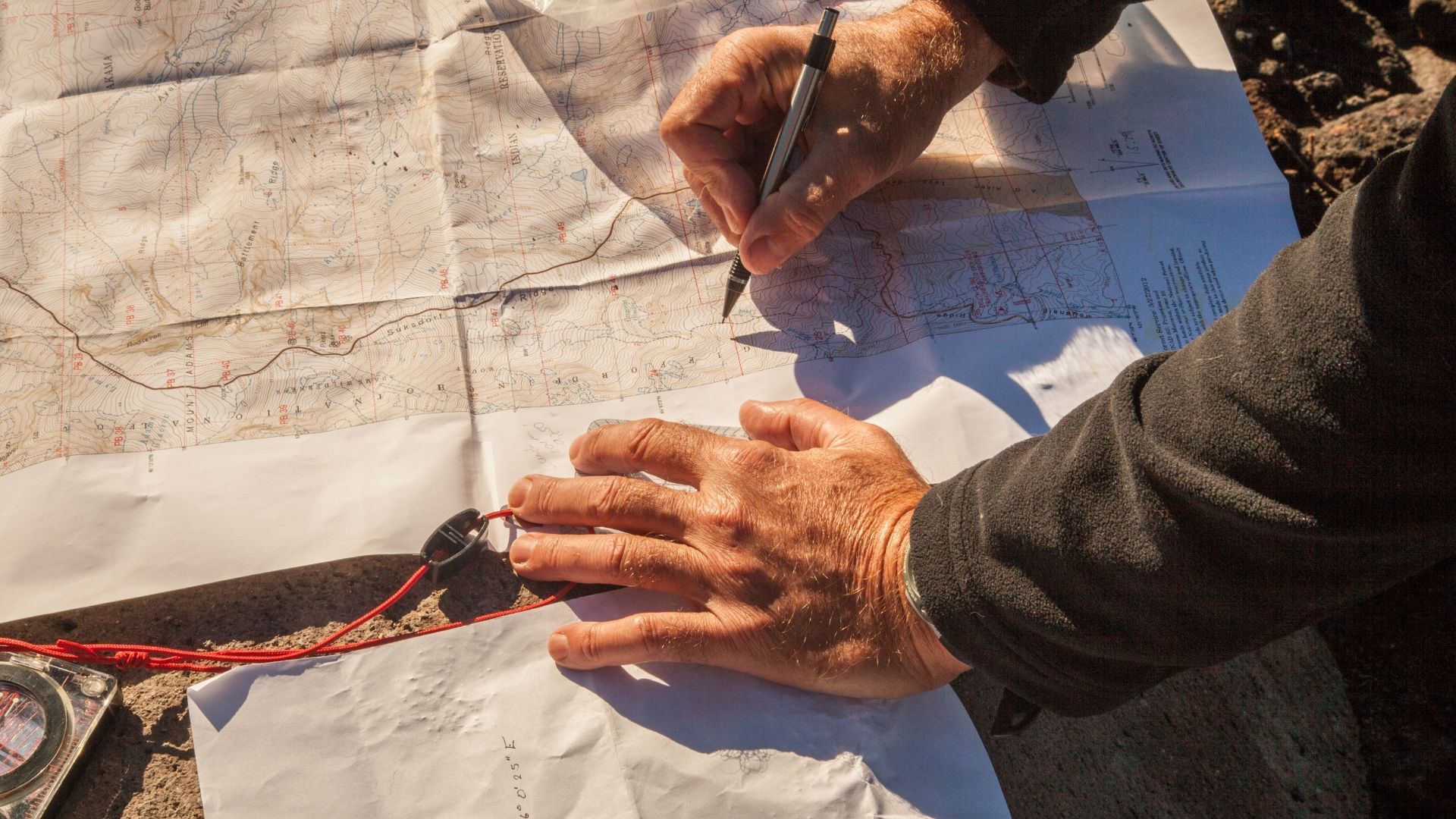
In the fast-paced world of engineering, it’s easy to get caught up in the latest technology and advanced techniques. However, sometimes going “back to basics” is essential to ensure that the foundational principles of your projects are solid and well-understood. One fundamental concept that is crucial across many engineering disciplines—especially civil and environmental engineering—is topography. Topography is the starting point for successful project planning, whether you’re working on land development, infrastructure projects, or environmental assessments. In this blog, we’re taking it back to the basics. What is topography and why do you need it? What Is Topography? Topography refers to the arrangement of natural and artificial physical features of an area. In simple terms, it’s the study and mapping of the surface characteristics of the Earth. This includes both elevation (height above sea level) and contour (shapes, slopes, and depressions) of the land. Topographic surveys capture the lay of the land, including natural features like rivers, hills, valleys, forests, and man-made structures like roads, buildings, and utilities. Topographic surveys use a combination of contour lines, elevation data, and physical landmarks to create detailed maps and models. These maps help engineers, architects, and planners understand the layout of the land and make informed decisions regarding construction, drainage, utilities, and environmental considerations. Why You Need Topography: The Foundation for Successful Engineering Projects 1. Accurate Site Planning Before any construction project can begin, it’s essential to understand the existing site conditions. A topographic survey provides a detailed map of the land, including slopes, drainage patterns, and existing infrastructure. This helps engineers and architects plan for the optimal placement of buildings, roads, utilities, and other features. With a clear understanding of the land’s natural and man-made features, you can avoid costly errors down the road. For example, an improperly planned site can result in problems with water drainage, foundation instability, or even environmental degradation. By going back to basics and performing a comprehensive land survey , you can ensure that the project is built on solid, reliable ground. 2. Design and Construction Precision Precision is key in the field of engineering. When designing any infrastructure or land development project, it’s critical to know the exact contours and elevations of the land. This knowledge ensures that designs are properly tailored to the natural features of the site, which minimizes the risk of problems during construction. Whether it’s ensuring proper drainage, designing roadways with the correct gradient, or placing utilities in the right locations, topography provides the necessary data to guide the design process. It also supports effective construction by providing the team with accurate measurements and reference points. 3. Effective Drainage and Water Management Proper drainage is one of the most significant concerns in engineering projects, particularly in civil and environmental engineering. The slope and contours of the land dictate how water flows across a site, which can have a profound impact on flood risk, erosion, and water quality. A full topographic survey allows engineers to assess natural drainage patterns, identify low-lying areas, and design effective stormwater management systems . Whether it’s planning for retention ponds, grading, or stormwater runoff management, understanding the land’s topography is essential for mitigating flooding and ensuring the sustainability of the site. 4. Environmental Impact and Sustainability Topographic data plays a crucial role in understanding and mitigating the environmental impact of construction projects. With this information, engineers and environmental consultants can assess sensitive areas, such as wetlands, floodplains, or habitats for endangered species, and plan to minimize disruption. Additionally, topography is critical when planning projects with sustainability in mind . Understanding the natural terrain allows engineers to design solutions that work harmoniously with the land, reducing the need for disruptive construction techniques and ensuring that ecosystems are preserved for future generations. 5. Regulatory Compliance and Permitting Many construction projects require permits from local authorities, and topographic surveys are often a required component of these applications. Accurate topographic maps are essential for demonstrating that the project complies with zoning laws, building codes, and environmental regulations. Whether you’re dealing with slope restrictions, stormwater regulations, or wetland protection laws, topographic data helps ensure that your project meets all legal requirements. Some projects may involve floodplain or waterway assessments, for which topographic surveys are critical in providing data on elevation, water flow, and drainage patterns. Inadequate topographic data can delay or prevent approval, leading to unnecessary costs and project delays. 6. Risk Reduction and Cost Savings Topographic surveys help identify potential risks on a site before they become major issues. Whether it’s finding hidden drainage problems, identifying unstable ground, or revealing environmental concerns, having accurate topographic data reduces the likelihood of costly mistakes during construction. Furthermore, understanding the topography can lead to better project budgeting. Knowing where to place structures, roads, or utilities can optimize material usage, reduce earth-moving costs, and improve overall project efficiency. By addressing potential issues early, engineers can implement cost-effective solutions, reducing the need for change orders and project delays. How REGA Engineering Can Help with Topographic Surveys in Nebraska At REGA Engineering, we specialize in providing precise and reliable topographic surveys to support your engineering projects. Our team of experts uses advanced technology and industry best practices to deliver high-quality topographic data that empowers you to make informed decisions. Whether you're working on a small-scale land development project or a large infrastructure initiative, we provide the data you need to ensure your designs are feasible, efficient, and compliant with all regulations. Need topographic surveys for your next project? Contact REGA Engineering today to discuss how our expert surveying services can support your needs and ensure the success of your engineering project.

The implementation of a Stormwater Pollution Prevention Plan (SWPPP) is essential for construction projects, industrial sites, and any activities that could potentially impact stormwater runoff. A well-executed SWPPP is not only a regulatory requirement but also a proactive step toward protecting the environment and ensuring the safety of local water resources. Regular inspections are a critical component of maintaining an effective SWPPP and ensuring compliance with local, state, and federal environmental regulations. In this blog, we’ll talk about the best SWPPP inspection practices to ensure that your site remains compliant, environmentally safe, and operationally efficient. Why Are SWPPP Inspections Important? SWPPP inspections are designed to assess the effectiveness of a site’s erosion and sediment control measures, ensuring that stormwater runoff is properly managed. These inspections are crucial for the following reasons: Regulatory Compliance : Federal and state agencies require regular SWPPP inspections to verify that construction or industrial sites are adhering to stormwater runoff guidelines. Environmental Protection : SWPPP inspections help prevent harmful pollutants from being carried into local water bodies, protecting aquatic life and maintaining water quality. Avoiding Penalties : Failing to conduct regular SWPPP inspections or adequately address deficiencies can result in fines, penalties, or delays in your project. Keeping up with inspections helps avoid costly non-compliance issues. Project Efficiency : Proper inspections help ensure that erosion control measures are working effectively, reducing the risk of delays caused by stormwater-related issues. Best Practices for SWPPP Inspections To ensure that your SWPPP is working as intended and that your site remains compliant, follow these best practices for regular inspections. 1. Conduct Regular, Scheduled Inspections The frequency of SWPPP inspections depends on the site’s location, the phase of construction, and regulatory requirements. Typically, inspections should be conducted at least once every 7 days or within 24 hours after a rain event of 0.5 inches or more. However, the schedule may vary based on local regulations and specific site conditions. It’s important to stay ahead of potential issues by conducting regular inspections and addressing concerns promptly. 2. Inspect Erosion and Sediment Control Measures During each inspection, carefully evaluate the effectiveness of all erosion and sediment control measures implemented on the site. This includes checking the following: Silt fences Sediment basins and ponds Mulch and soil stabilization Inlet protection 3. Verify Proper Maintenance of Stormwater Systems Proper maintenance of stormwater control systems is essential to keep them functioning as intended. During inspections, check that all drainage systems, detention ponds, and stormwater management devices are clear of debris and operating effectively. Check for standing water: Standing water can indicate poor drainage or sediment build-up, both of which can cause localized flooding and compromise the site’s runoff management. Ensure proper sediment removal: Sediment basins and traps should be regularly cleaned out to ensure that they are effectively capturing runoff and not allowing sediment to escape into local water sources. Pro Tip : Ensure that sediment control devices are cleaned out regularly and after major storms to maintain their capacity. This will prevent overflow and ensure proper water filtration. 4. Document and Address Deficiencies Promptly A crucial part of SWPPP inspections is documenting any deficiencies or non-compliance issues found during the inspection. Identifying issues early on allows you to make timely corrections and prevent more serious environmental impacts. You should record any failures or damages and make necessary repairs or replacements. 5. Ensure Proper SWPPP Training for Site Personnel Site personnel, including contractors and workers, should be trained on the importance of SWPPP and their role in ensuring compliance. Regular inspections can only be effective if the team understands the purpose of erosion control measures and stormwater management. Educate workers about proper stormwater management practices, including material handling and storage, waste management, and minimizing site disturbance. Encourage employees to be vigilant about reporting issues or hazards that may impact stormwater runoff. 6. Conduct Post-Storm Inspections One of the most critical times for SWPPP inspections is after a rainstorm. Heavy rainfall can reveal weaknesses in your erosion control measures and lead to increased runoff and sedimentation. It’s important to inspect the site thoroughly after each significant rain event to assess the effectiveness of your stormwater controls. Look for any signs of sediment that have escaped from control barriers, as this can lead to water pollution. Storms can also cause temporary erosion control measures (such as hay bales or temporary barriers) to become displaced or ineffective. Re-secure or replace these measures as needed. Nebraska’s Trusted SWPPP Inspectors Regular and thorough SWPPP inspections are essential to maintaining compliance and safeguarding the environment. By following these best practices, you can ensure that your site’s stormwater management system is effective, efficient, and ready to handle the challenges of varying weather conditions. At REGA Engineering, we specialize in helping our clients stay on top of their environmental responsibilities with expert SWPPP inspections and guidance. Contact REGA Engineering if you need help with your SWPPP inspections or have any questions about compliance. Our team of experienced professionals can ensure that your site remains in full compliance, protecting both the environment and your bottom line.

When it comes to any construction or infrastructure project—whether it's a new road, a residential development, or a commercial building—a civil engineer's expertise can make all the difference. A skilled civil engineer makes sure that your project is structurally sound by creating an in-depth approach to design, implementation, and problem-solving. Here’s why hiring a civil engineer takes your project to the next level: Expertise in Design and Planning A civil engineer's main job is to turn ideas into practical, working designs. They use technical knowledge to consider things like soil conditions, environmental impact, weight limits, and regulatory requirements. Their expertise ensures that your project is not only visually appealing but also structurally sound and compliant with local codes and regulations. Whether it’s designing drainage systems, roads, or utilities, civil engineers know how to plan for the best performance, durability, and safety. They can also spot potential problems and create a risk mitigation plan for your project, helping you avoid expensive changes later on. Effective Project Management Civil engineers are trained to manage large-scale projects and multi-disciplinary teams. From the initial design phase through to construction, a civil engineer coordinates the different contractors, architects, and other professionals. They create schedules, track progress, and manage timelines and budgets to prevent delays or unnecessary expenses. Effective project management keeps all elements of the project aligned with your vision while maintaining project quality. Optimization of Resources and Sustainability Civil engineers are experts at finding ways to reduce the environmental impact of construction projects, improve energy efficiency, and maximize the use of materials. They focus on things like energy use, waste management, and sustainable development practices to create cost-effective, green solutions. They also know how to include green features, like rainwater systems, renewable energy, and sustainable land development, to help meet environmental goals and regulations. Compliance with Regulatory Standards and Safety Codes Navigating local, state, and federal regulations can be challenging, but civil engineers are trained to handle it. They ensure your project meets zoning laws, environmental rules, building codes , and building permits. This helps avoid delays and protects you from legal issues. Safety is also a top priority for civil engineers. They make sure your project is structurally sound and meets safety standards. By hiring a civil engineer, you’re investing in the safety and well-being of your project and those putting it to use. Long-Term Performance and Maintenance A great civil engineer considers a project's long-term durability and maintenance. They design with durability in mind, considering wear and tear, environmental conditions, and future needs. This helps avoid costly repairs or major renovations later. Civil engineers also offer expertise in creating maintenance plans, ensuring that your project continues to operate efficiently and safely for years to come. This forward-thinking approach can save time and money in the long term, protecting your investment. Problem Solving and Innovation One of the greatest strengths of a civil engineer is their ability to problem-solve. Whether it’s a site with challenging topography, unexpected weather conditions, or infrastructure limitations, civil engineers are trained to find solutions that keep the project moving forward. With their creative thinking, civil engineers can introduce new technologies or methods that make your project more efficient, cost-effective, or environmentally friendly. Thinking out of the box often results in higher-quality outcomes and more sustainable solutions. Smooth Communication and Collaboration Civil engineers are skilled communicators, often serving as the point-of-contact for a project. They maintain open lines of communication with all stakeholders, including architects, contractors, government agencies, and you—the client. This ensures the project runs smoothly, and everyone is working toward the same goals. Civil engineers also explain technical details to non-technical stakeholders, ensuring that everyone is informed and involved. At REGA Engineering , we pride ourselves on creating transparent, collaborative relationships with our clients. We believe that clear communication is the key to success, and our civil engineers work closely with you to ensure your vision is realized in every step of the project. Midwest Civil Engineers Add Value Beyond Construction Hiring a Midwestern civil engineer is one of the smartest decisions you can make to take your project to the next level. Our expert team brings years of experience and a commitment to excellence to every project we undertake. Their expertise in design, planning, project management, sustainability, and compliance ensures that your project is not only successful but also efficient, safe, and durable. Contact us today to learn more about how our civil engineering services can bring your vision to life!

Managing costs while ensuring accurate assessments is important in terms of insurance. Forensic engineering plays a big role in this process as it provides valuable insights that can save your insurance company time and money. Let’s explore how forensic engineering can save your insurance company money. What is Forensic Engineering? Forensic engineering , is the application of engineering principles to investigate materials, products, structures, or systems that fail or do not operate as intended. Forensic engineers analyze these failures to determine the root cause and assess liability. Their expertise can be essential in legal cases, insurance claims, and risk management. How Forensic Engineering Saves Money Accurate Assessments Forensic engineers provide detailed investigations that help identify the true cause of damage. By pinpointing the exact reasons behind a loss—whether it’s due to a design flaw, material failure, or external factors—insurance companies can make informed decisions regarding claims. This accuracy can prevent costly payouts for claims that may not be valid. Fraud Detection Insurance fraud can significantly impact an insurer's bottom line. Forensic engineers are skilled at spotting inconsistencies in claims. They can uncover fraudulent activities by analyzing evidence and conducting thorough investigations, helping to protect the insurance company from unnecessary financial losses. Improved Risk Management Understanding potential risks is key to reducing future claims. Forensic engineering provides insights that can help insurance companies identify trends and common causes of loss. This knowledge allows insurers to adjust their risk management strategies , policies, and underwriting practices, ultimately minimizing risk and potential payouts. Smoother Claims Process The expertise of forensic engineers can speed up the claims process. By providing clear and concise reports, they help adjusters and claims managers assess situations more quickly. A faster resolution boosts customer satisfaction and reduces administrative costs associated with prolonged claims handling. Litigation Support In cases where claims lead to disputes or litigation, forensic engineers can serve as expert witnesses . Their technical knowledge and ability to communicate complex findings in an understandable way can be invaluable in court. This support can help insurance companies settle disputes more favorably, saving legal costs and potential damages. Your Investigative Engineers of Nebraska Incorporating forensic engineering into your insurance operations can lead to significant savings and efficiencies. By ensuring accurate assessments, detecting fraud, and improving risk management, forensic engineers provide a critical service that protects your bottom line. Contact us today and let us help you navigate the challenges of the insurance industry. At REGA Engineering, our team of forensic engineers is dedicated to delivering thorough investigations and expert analysis.

When it comes to designing outdoor spaces, landscape architecture is more than just creating aesthetically pleasing environments. Effective landscape architecture combines functionality, sustainability, and creativity to transform spaces into vibrant, functional areas. Here’s what really matters in landscape architecture: 1. Functionality and Purpose The goal of landscape architecture is to design spaces that are both beautiful and functional. Whether it's a public park, a private garden, or a commercial property, it’s important to understand the intended use of the space. At REGA Engineering , we focus on creating designs that meet the specific needs of our clients and their patrons. We consider factors like traffic flow, accessibility, and the integration of necessary amenities, ensuring that every project serves its purpose. 2. Sustainability and Environmental Impact Sustainability is a cornerstone of modern landscape architecture. You should emphasize the use of native plants, water-efficient irrigation systems, and eco-friendly materials. By incorporating sustainable practices, you can help reduce the environmental footprint of your projects and promote ecological balance. 3. Aesthetic Appeal Aesthetic appeal is a major aspect of landscape architecture. A well-designed landscape should complement the surrounding environment, creating a harmonious and visually pleasing area. Blend creativity with practical design principles to achieve a balanced aesthetic that reflects the client's vision while enhancing the natural landscape. 4. Maintenance and Durability A well-designed landscape should be both durable and easy to maintain. REGA Engineering prioritizes the selection of materials that are not only visually appealing but also resilient and low maintenance. It guarantees that the landscape retains its beauty and functionality over time. Say goodbye to frequent repairs and upkeep! 5. Community and Cultural Relevance Understanding the community and cultural context is essential in landscape architecture. Designs should reflect the values, history, and needs of the local population. Taking the time to engage with the community and consider their input can help ensure that projects are relevant and beneficial to the people they serve. Let REGA Handle Your Landscape Architecture in Lincoln, Nebraska Landscape architecture requires a careful balance of functionality, sustainability, aesthetics, and community relevance. At REGA Engineering, we are dedicated to creating landscapes that not only meet but exceed our clients' expectations. By focusing on these essential elements, we transform outdoor spaces into beautiful, functional, and enduring environments. Our team of skilled professionals is ready to bring your vision to life with innovative designs. Contact us today if you're looking to start a landscape architecture project or need expert advice on your outdoor space.
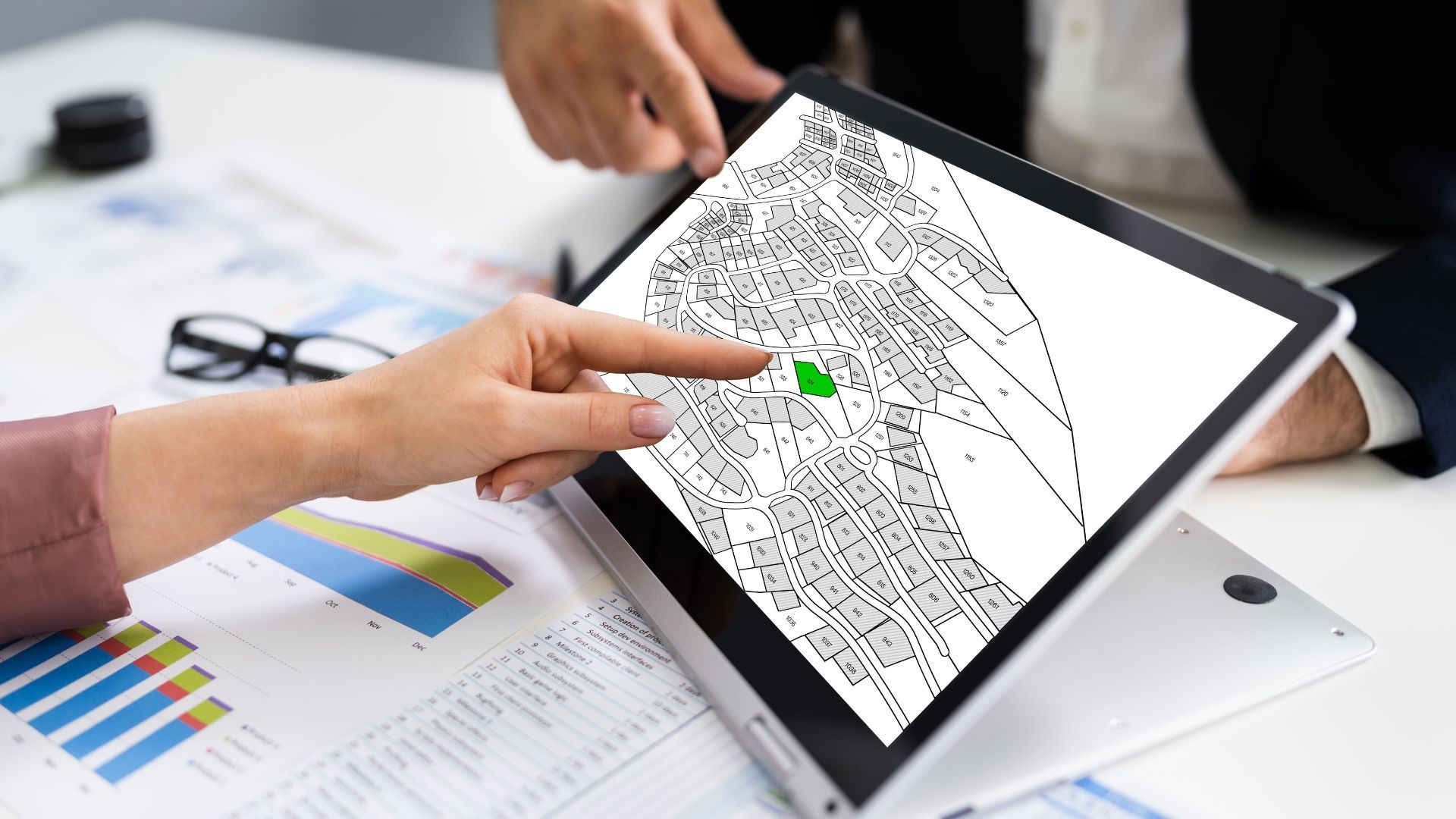
Accuracy and clarity are essential when beginning a new construction project or real estate investment. One of the key steps in this process is having a professional land surveyor on board the project. At REGA Engineering, we understand the importance of land surveyors in shaping successful projects. Here’s why you need a land surveyor for your next project: 1. Accurate Property Boundaries One of the main duties of a land surveyor is to define and map out property boundaries. This is an important step because you’ll want to avoid arguments with neighbors, make sure you’re in compliance with zoning laws, and confirm that your property lines are accurately represented in official documents. A clear understanding of your property boundaries helps prevent legal issues and keeps your construction or development within your property limits. 2. Detailed Site Analysis Land surveyors provide a detailed analysis of the site, including its topography, existing structures, and natural features. This information is necessary for architects, engineers, and builders, allowing them to make informed decisions about site planning and design. By understanding the land’s characteristics, you can optimize the placement of structures, plan for drainage, and address any potential challenges before construction begins. 3. Compliance with Local Regulations Building codes and zoning regulations differ from one location to another. A land surveyor is well-versed in these specific regulations and will make sure that your project complies with local laws. They can help you navigate the complexities of permitting and approvals, reducing the risk of costly delays or legal issues. 4. Accurate Construction Planning Accurate measurements are crucial for construction projects. Land surveyors gather precise data that is used for designing and constructing buildings, roads, and other infrastructure. Their work ensures that the construction is aligned with the plans and specifications, which is important for the structural integrity and functionality of the project. 5. Resolving Property Disputes Disputes over property lines or construction invasions can be challenging and expensive to resolve. Having a professional land surveyor conduct a thorough survey can give you the evidence needed to resolve these disputes. Their expert documentation and testimony can be key in legal situations, helping to clarify property lines and support your case. 6. Informed Decision-Making Whether you’re buying a new property, developing land, or undertaking renovations, having a land surveyor’s insights allows for more informed decision-making. Their detailed reports and analyses provide a clear picture of the site’s potential and limitations, allowing you to make strategic choices that fit your goals. 7. Future-Proofing Your Project A land surveyor’s work extends beyond the immediate project. Their surveys provide a detailed record of the land’s conditions, which can be useful for future modifications or developments. This data can help streamline future projects and provide a reference point for any changes or expansions. Partner with REGA Engineering for Expert Land Surveying At REGA Engineering, we offer expert land surveying services that provide the accuracy and clarity you need for your projects. Our team of skilled professionals uses the latest technology and techniques to deliver precise and reliable survey results, ensuring your project is on solid ground. Contact us today to learn more about how our land surveying services can benefit your next project. With our expertise, you can proceed with confidence, knowing that every detail has been meticulously addressed.

In a world full of uncertainty, having a plan in place for your business and projects in the event something goes wrong can give you an extra sense of security. Whether you're beginning a new project, expanding your business operations, or you might fear any other unforeseen circumstances, having a risk mitigation plan can help offer a safety net for success. Risk mitigation is a business management strategy involving planning and developing solutions to minimize threats to project objectives. In this blog, we’ll talk about the importance of a proper risk mitigation plan and strategies to give you peace of mind. Pointing Out Potential Risks The first step in effective risk mitigation is identifying potential risks that could impact your project or business. The types of risks you might be up against can vary, from financial uncertainties and market fluctuations to technical issues and regulatory changes. Performing a risk assessment and analysis can give you a better understanding of any potential threats your business could face. Assessing the Impact and Likelihood Once potential risks have been spotted, the next step is to assess their impact and likelihood of occurring. Not all risks are created equal, so you should prioritize the risks you find based on their severity and probability of happening. This assessment allows you to distribute your resources accordingly and focus on addressing the most significant threats. Developing Mitigation Strategies Now that you have a clear understanding of the risks at hand, you can begin creating mitigation strategies to minimize the impact of any potential damage. These strategies may include preventive measures, like finding redundancies in important systems, diversifying suppliers, or even establishing contingency plans to address unforeseen events swiftly. By being proactive, you can reduce their vulnerability and stand strong in the face of adversity. Monitoring and Adaptation Risk mitigation is an ongoing process that requires constant awareness and adaptation. As business environments evolve and new risks emerge, it's important to continue monitoring and reassessing the effectiveness of mitigation strategies. This process can involve regular risk reviews, performance monitoring, and scenario planning to be sure that your business is responsive to changing circumstances. Creating a Culture of Risk Awareness Ultimately, effective risk mitigation is not just about implementing strategies; it's also about creating a culture of risk awareness within an organization. By encouraging open communication, collaboration, and accountability, businesses can train their employees to spot and address risks proactively. A collective effort ensures that risk management becomes ingrained in the organization's DNA, driving sustainable success and resilience over the long term. Have a Plan, Some Risks Aren’t Worth It For over 20 years, REGA Engineering has been committed to encouraging our clients to create strategic risk management solutions that fit their goals. Thinking ahead in our approach to all projects allows our clients to secure their investments, seize opportunities, and achieve sustainable growth. Contact our experienced engineers today by phone, email, or online. The REGA way sets the foundation for long-term success and client satisfaction.

Sustainable development has become a popular idea as environmental concerns have become a more common topic of discussion. REGA Engineering believes that sustainable development is the key to creating a better and brighter future. In this blog, we’ll talk about what sustainable development really means and why it’s so important to us. Defining Sustainable Development Sustainable development is a way to grow and progress our environment that doesn’t have any major long-term impacts. It’s important to find a way to meet the societal needs of the present without affecting future generations’ ability to meet their own needs. Understanding the Three Pillars Sustainable development can be split up into three separate pillars : environmental, social, and economic. Each pillar plays an important role in creating a more sustainable future. The environmental pillar focuses on protecting natural resources, reducing pollution, and helping to control climate change. The social pillar highlights equity, inclusivity, and the general well-being of the community. The economic pillar aims for success through responsible resource management, innovation, and practicing fair trade. Why Does it Matter? With global temperatures on the rise, biodiversity is on a decline, and we continue to experience more social inequalities, sustainable action is an urgent need . Sustainable development provides a universal blueprint for tackling these challenges. It offers a structure for making informed decisions that will prioritize the well-being of people and the planet at the same time. Benefits of Sustainable Development Sustainable development practices can benefit the world in a huge way. Overall, it can improve our quality of life by providing cleaner air, more efficient resource usage, and a more cohesive society. Even the smallest of practices can help balance the three pillars and protect our environment. By investing in sustainable practices, businesses can improve their brand reputation, contribute to a healthier living and future-proof their operations against potential risks. Check out our blog about environmental restoration and how it can benefit our planet. Our Approach to Sustainable Development Our approach to sustainable development is guided by innovation, collaboration, and continuous improvement. We utilize cutting-edge technologies and expertise to develop solutions that meet the needs of today without compromising the opportunities of tomorrow. Through our partnerships and collaborations with like-minded organizations, we aim to drive positive change and inspire others to join us on this journey towards a sustainable future. Join Us in Shaping Tomorrow As we look ahead to the challenges and opportunities that lie ahead, we invite you to join us in embracing sustainable development as a blueprint for a better future. Whether it’s something as little as recycling or as big as you letting us take care of your civil engineering needs , all you have to do is take that first step. Together, we can create a cleaner, healthier and prosperous world for ourselves and future generations to come. What is Sustainable Development Sustainable development provides a vision for change and allows us the opportunity to build a more equitable and resilient world. By adopting sustainable practices and embracing the principles of sustainability, we can shape a future that is not only sustainable but also thriving. We customize our process to suit your needs. Contact us today and let’s get to work!

Turning raw land into a thriving development project requires meticulous planning and a comprehensive understanding of vision and reality. Here at Rega Engineering, with our decades of experience in all-service civil engineering, we've guided countless projects from conception to completion. Today, we'll share some key steps in land development planning to help you navigate this exciting, complex, and necessary process. 1. Assess Feasibility and Highest and Best Use: The cornerstone of any successful land development project is a thorough feasibility study. This in-depth analysis evaluates your land’s potential by diving into various aspects, such as: Market Research: Understanding your development’s existing and projected demand is crucial. For example, is there really a need for residential housing, commercial space, or a mixed-use development? Market research helps identify if your project follows current trends and can attract potential tenants or buyers. Site Analysis: A detailed site analysis by a qualified civil engineer helps the team find crucial information about the land. This includes topography, soil conditions, the presence of wetlands or endangered species, and access to utilities. These factors lay the groundwork for a design that seamlessly integrates with the existing environment, minimizing challenging construction. Zoning and Regulations: Zoning regulations dictate a particular land parcel’s permitted use(s). Familiarize your team with zoning codes, building codes, and any specific requirements laid out by the local planning authority. This ensures your project follows all regulations, avoiding costly delays or redesigns later. Financial Viability: A feasibility study also involves a comprehensive financial analysis. This considers land acquisition costs, construction expenses, infrastructure needs, and potential revenue streams. Highest and Best Use: Through market research, site analysis, and financial considerations, the feasibility study helps identify the land’s "highest and best use." This conceptual option maximizes the project's value and economic return while following all regulations and environmental considerations. 2. Assemble Your Project Team: Unsurprisingly, great land development is a collaborative endeavor, so assembling a skilled and experienced team is vital. Here are some key team members to successfully navigate the project’s various stages: Civil Engineer: A civil engineer acts as the backbone of the project. They provide expertise in site planning, grading, drainage design, utility infrastructure planning, and complying with relevant codes and regulations. Architect: The architect plays a crucial role in translating your vision into a functional and aesthetically pleasing design. They work closely with the civil engineer to ensure the design adheres to site constraints and regulations. Landscape Architect: A landscape architect focuses on seamlessly integrating the development into the surrounding environment. They design landscaping elements, manage stormwater runoff , and coordinate the site’s sustainability. Environmental Consultant: Environmental consultants conduct environmental impact assessments, identify restoration needs , recommend mitigation strategies, and navigate permits with environmental agencies. Land Surveyor: A land surveyor provides accurate measurements and mapping of the property. This is crucial for site planning, infrastructure design, and legal descriptions (for permits and future transactions). 3. Design and Planning: With a clear picture of the project's feasibility and a team assembled, the design and planning come into play: Conceptual Design: This initial stage involves brainstorming and developing preliminary design concepts. Here, the architect and civil engineer collaborate to create a layout that optimizes land use, integrates infrastructure needs and adheres to zoning regulations. Detailed Engineering Plans: Following the conceptual design, the civil engineer creates detailed engineering plans. These plans translate broad strokes into technical specifications (drainage systems, utility layouts, road designs , and construction details). Landscape Design: The landscape architect develops a detailed landscaping plan that incorporates features like trees, shrubs, walkways, and green spaces. This plan fosters a visually appealing environment while managing stormwater runoff and promoting sustainability. Permitting: Obtaining necessary permits from local authorities is crucial. Work with your team to navigate the permitting process and comply with all plans and documents comply with all applicable codes and regulations. 4. Community Engagement and Public Hearings: Land development projects often impact surrounding communities. Proactive community engagement fosters transparency, builds trust, and helps address concerns early on. Here are some strategies: Public Meetings: Hosted public meetings allow residents to learn about the project, voice their opinions, and ask questions. Community Outreach: Engaging with community groups and neighborhood associations keeps residents informed and opens communal communication. Addressing Concerns: Proactively address residents' concerns about traffic flow, noise levels, potential environmental impact, and aesthetics. 5. Construction and Project Management: Once the permits are secured and a design is finalized, the construction gets started. Effective project management is vital during this phase: Construction Management: A qualified construction manager oversees the site’s day-to-day operations. They follow plans , manage budgets, coordinate with contractors and subcontractors, and address any unforeseen challenges that may arise. Quality Control: Maintaining quality control throughout construction is paramount. Regular inspections by engineers and qualified professionals ensure the project meets the specified standards and adheres to safety regulations. Budget Management: Closely monitor the project’s costs throughout its construction. Your team should be using project management software to track expenses and identify areas for necessary adjustments. How Land Development Can Change Your Project With extensive experience and a commitment to collaboration, Rega Engineering can be your trusted partner throughout the entire process. From feasibility studies and permits to infrastructure design and construction management, our skilled team is equipped to guide your project from vision to reality. Let's work together to transform your land development dream into a thriving reality!

Imagine gazing at a majestic bridge spanning a vast river, a towering skyscraper piercing the clouds, or even the simple elegance of a perfectly balanced mobile hanging in your living room. Each of these structures (no matter their size or complexity) rely on a fundamental principle: structural stability . But how do we ensure these marvels of engineering can withstand the forces of nature and gravity? The answer lies in the fascinating realm of structural analysis . 1. Understanding the Invisible Forces Structural analysis is the backbone of safe and reliable structures. It's the scientific discipline that delves into the invisible forces ( like gravity ) acting on structures, allowing civil engineers to predict their behavior and ensure their stability. Think of it as the architect's blueprint, only instead of bricks and mortar, it deals with loads, stresses, and deformations. 2. The Effects of Loads and Materials Our engineering stage is anything from a simple beam to a complex building. The actors on this stage are the loads . These can be static, like the weight of the structure itself, or dynamic, like wind, earthquake forces, or even traffic vibrations. Understanding the type, magnitude, and location of these loads is crucial. But the stage itself is just as important. Enter the materials : steel, concrete, wood, each with unique properties like strength, stiffness, and elasticity. The interplay between loads and materials determines how a structure reacts. 3. The Trade's Analysis Methods So, how do we analyze this intricate interplay? Engineers have a toolbox filled with various methods: Hand calculations: For simpler structures, basic principles of mechanics and equilibrium are applied to manually calculate forces and stresses. Computer-aided analysis: For complex structures, powerful software like finite element analysis (FEA) simulates structural behavior under various loads, providing detailed insights into its response. Physical testing: In some cases, building scaled models or conducting real-world tests further validates the analysis results and offers valuable practical insights. 4. Decoding the Results The analysis reveals a treasure trove of information: Internal forces: These are the invisible tug-of-war forces acting within the structure's elements, like tension, compression, and shear. Stresses: These are the internal pressures experienced by the material due to these forces, measured in units like megapascals (MPa) . Deformations: These are the displacements or movements the structure undergoes due to the applied loads, measured in millimeters or centimeters. 5. Safety First The ultimate goal of structural analysis is to ensure a structure’s safety and serviceability . It's about finding the sweet spot where the structure can withstand any expected loads without exceeding the material's capacity. Engineers use the analysis results to: Design the structural elements: Size, shape, and material are chosen based on the calculated forces and stresses. Optimize the design: Refine the structure for efficiency and economy while maintaining safety. Evaluate existing structures: Assess the integrity of existing structures for potential renovations or upgrades. 6. The Art of Structural Analysis Structural analysis might seem like a purely mathematical exercise, but it's much more. It's an art form where engineers use their knowledge, experience, and intuition to interpret data and make informed decisions. They consider factors like: Construction methods: How the structure will be built and the limitations of construction techniques. Durability and sustainability: Ensuring the structure performs well over its lifetime while minimizing environmental impact. Aesthetics and functionality: Balancing the structural requirements with the desired form and function of the structure. Beyond the Numbers, What is Structural Analysis? From the bridges we cross to the buildings we inhabit, structural analysis plays a vital role in shaping our world. It's the invisible guardian, ensuring our structures stand tall and safe, silently protecting us from the forces around us. So, the next time you marvel at a magnificent structure, remember the invisible science of structural analysis working tirelessly behind the scenes. At Rega Engineering, we are passionate about this science, using our expertise to create strong, efficient, and beautiful structures. Our team would love to apply this knowledge to your next project and help you make your mark in our community.
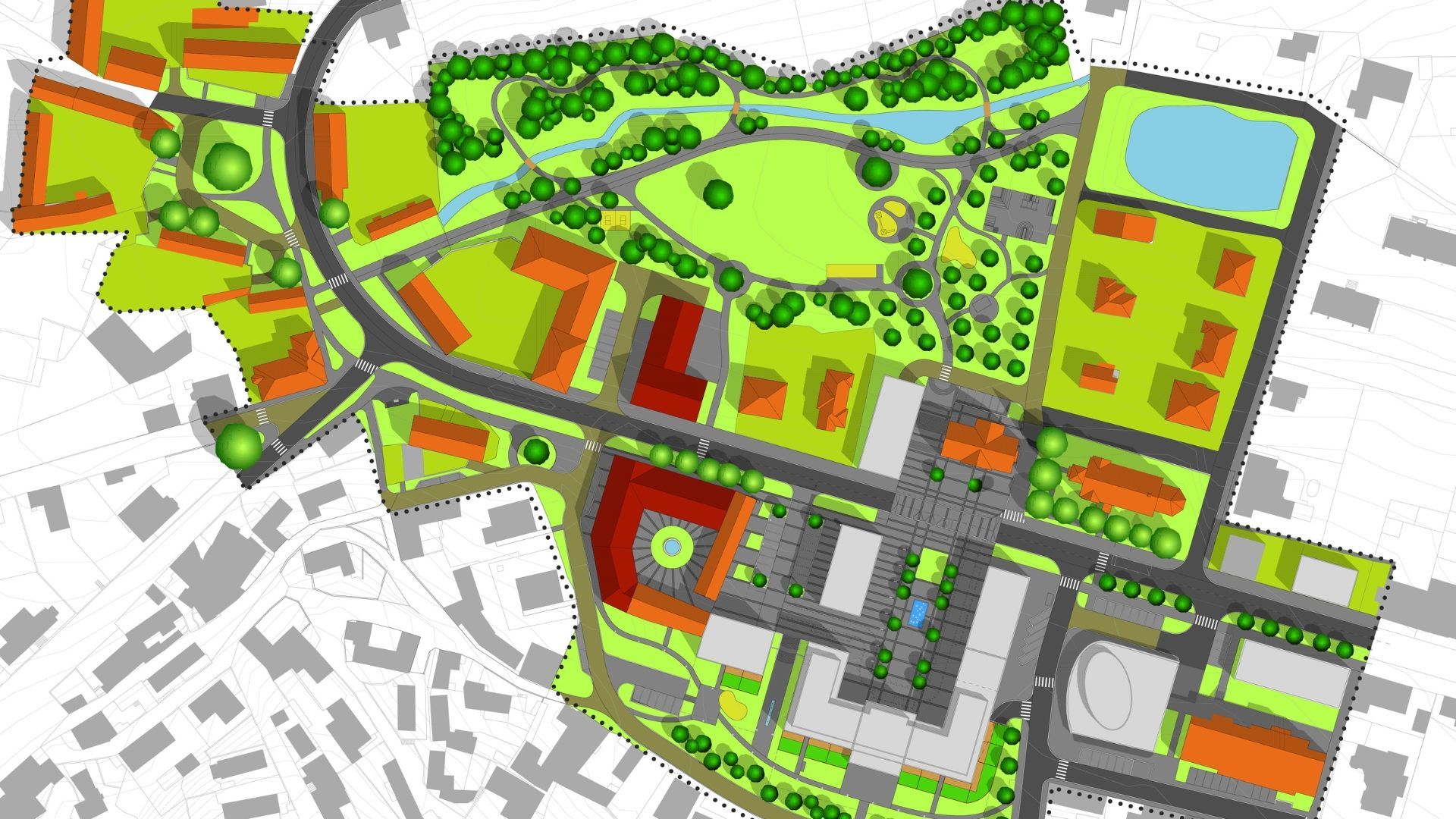
Engineering serves as the backbone of transportation planning, crafting innovative solutions that transcend the limitations of time and technology. From the pioneering steam engines to contemporary smart cities, engineering has been the driving force behind transformative advancements. As we navigate our transportation’s historical challenges and possible futures, the profound connection with engineering becomes unmistakably evident. Join us in unraveling this fascinating history, where our expertise converges with the dynamic path of transportation planning. 1. The Historical Roots of Transportation Planning In our nation’s early days, getting around was a local affair where communities relied on basic means like dirt paths and waterways. As our cities and economies grew, they increasingly needed organized and effective transportation systems. The game-changer came in the 19th century with the introduction of the steam engine, giving rise to steamships and railways, reshaping our nation in the process. 2. The Rise of Automobiles and Highways The 20th century witnessed a game-changing shift with the widespread adoption of automobiles. The booming automobile industry not only opened exciting new possibilities but also brought about challenges that fundamentally reshaped how we think about transportation planning. Cities were suddenly grappling with traffic snarls, parking headaches, and the urgent need for sprawling road networks. This dire need led the US Army to lead a transcontinental motor convoy that examined the nation’s differing regional road systems. A key member of this convoy, future President Dwight Eisenhower, would later authorize the creation of our present-day Interstate Highway System. Emerging nationwide highways became key factors that shaped urban planning (how cities are built and interconnected). This era also saw the dawn of traffic engineering as a specialized field, dedicated to tweaking the flow of vehicles on roadways to achieve that perfect balance. 3. Sustainability and Environmental Concerns As we ventured into the late 20th century and the early 21st century, a heightened awareness of environmental concerns triggered refocused transportation planning. Sustainable transportation took center stage, focusing on curbing carbon emissions and promoting alternative transportation. Ideas like bolstering public transit, creating cycling lanes, and cultivating pedestrian-friendly urban spaces gained considerable traction. Civil engineers started factoring their environmental repercussions, marking the onset of an era characterized by eco-conscious and socially responsible planning. 4. Technology and the Digital Age In our current times, we witness a distinctive blend of technology and transportation planning. The surge in smartphones, ridesharing, and GPS navigation has fundamentally reshaped how we get around. Smart cities are harnessing the power of data and connectivity to fine-tune traffic patterns, minimize congestion, and elevate overall mobility experiences. Plus, the integration of artificial intelligence and machine learning has introduced predictive modeling . This empowers planners and engineers to anticipate, arrange, and tackle transportation challenges with ever-increasing effectiveness. 5. The Future of Transportation Planning Peering into our future, the arrival of autonomous vehicles stands poised to redefine our surroundings once more. Self-driving cars may even eliminate conventional infrastructure such as traffic lights and parking lots. Additionally, electric and sustainable technologies are poised to catalyze a deeper shift towards eco-friendly transportation. High-speed innovations like The Boring Company’s Vegas Loop hold the potential to reshape our commutes, lowering the barriers to long-distance commutes. We’re Prepared for Tomorrow’s Transportation Planning From the modest dirt paths to futuristic autonomous vehicles, transportation planning is a narrative of perpetual adaptations and innovations. At this juncture, we teeter on the brink of a new era where insights past and present will guide us to a sustainable and communal journey. Book a meeting with us today, and let's embark on a collaborative journey to your next project for whatever tomorrow may hold.
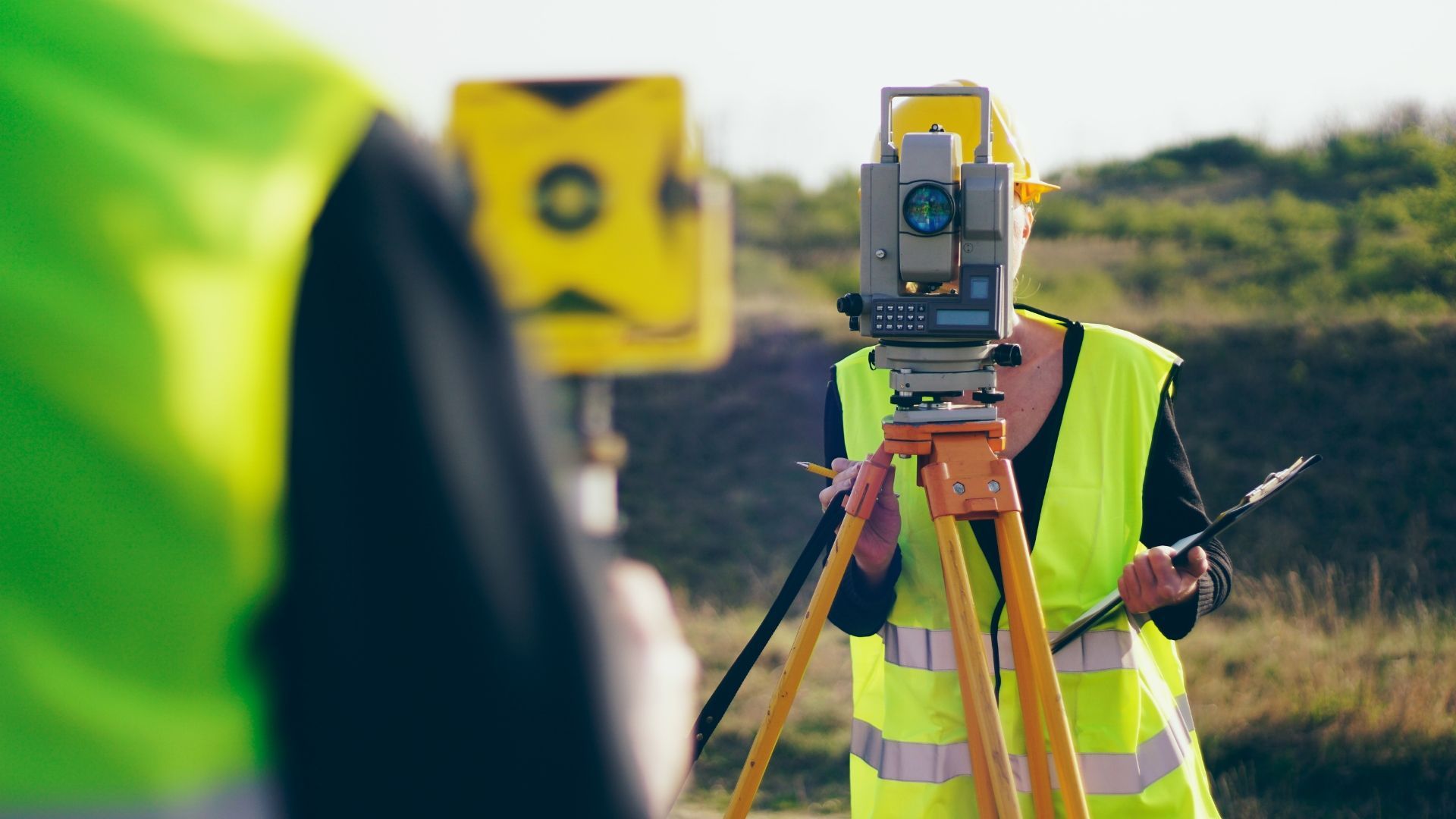
Land surveying might seem straightforward, but its significance runs deep. It’s the backbone of how we shape our world. Throughout history, land surveying has quietly guided the growth of civilizations and their communities’ development. Today, this unsung hero continues to influence our lives in ways we might not notice. We’ll unravel the impact of land surveying, uncovering its hidden impact that shape s our modern existence, from urban landscapes to environmental resources. 1: History of Land Surveying The history of land surveying is like a treasure trove of ancient wisdom . Imagine ancient Egyptians using simple tools to redraw property lines after the Nile's floods or Greeks meticulously planning cities with rudimentary measuring devices. In our nation’s early days, surveyors were highly respected individuals whose decisions constituted success or failure for many landowners. Over centuries, surveying evolved with advancing math and technologies, leading to today’s sophisticated discipline. This evolution is a testament to human ingenuity, paving the way for our modern engineering marvels. 2: Importance of Land Surveying in Engineering In the world of engineering, land surveying is the compass guiding every project . From towering skyscrapers to intricate road networks, every structure owes its existence to accurate surveys. Engineers lean on precise measurements and boundary markings to ensure safety, efficiency, and harmony. The marriage of surveying with engineering isn’t just about accuracy; it’s about seamlessly blending human design with the earth’s contours. This creates spaces that seamlessly coexist with the natural environment. 3: Techniques and Tools Used in Land Surveying Modern land surveyors wield toolkits that almost resemble something out of a sci-fi movie. GPS systems, total stations , and lasers are the gadgets behind pinpoint accuracy. Each tool allows surveyors to map terrains, measure distances, and gather data with incredible precision. These technological integrations empower surveyors to gather and navigate data in ways that were unimaginable a few decades ago. 4: Applications of Land Surveying Land surveying isn’t confined to construction sites, as it impacts various fields. From shaping city layouts to ensuring fair property divisions, it’s the silent force behind many decisions. Surveying also motivates environmental conservation, guiding efforts to preserve natural habitats and protect delicate ecosystems. These applications go beyond human needs, ensuring a balance between human development and preserving natural resources. 5: Importance of Accurate Land Surveying Picture that slapshot building where measurements were off by just a fraction. It might not seem like much, but precision reigns supreme in land surveying. A tiny mistake can cascade into massive construction errors or disputes over property lines. Accurate surveys don’t just save time and resources; they uphold a project’s integrity and safety. Emphasized precision is a professional commitment to ensuring each structure and boundary stands firm. 6: Future Trends in Land Surveying Land surveying’s future is an exciting landscape filled with drones, artificial intelligence, and LiDAR . Imagine heightened capabilities, smarter reports, and faster data collection thanks to these cutting-edge advancements. As technologies like these continue to evolve, they’ll increase the field’s efficiency and accessibility. This will transform land surveying into a more democratized field that’s accessible to even more engineers. What Does Proper Land Surveying Look Like? Land surveying might not always be in the spotlight, but its impact is undeniable. This silent hero shapes our surroundings and ensures that every structure stands on a foundation of precision and knowledge. No matter what, its history, role in engineering, tools, applications, accuracy, and future trends will influence our evolving world. At Rega Engineering, we pride ourselves on precision, actively analyzing the world around us . Our commitment to accuracy reflects our dedication to seamless developments with robust structures. Join forces with Rega Engineering to craft a world that's both precise and forward-thinking.
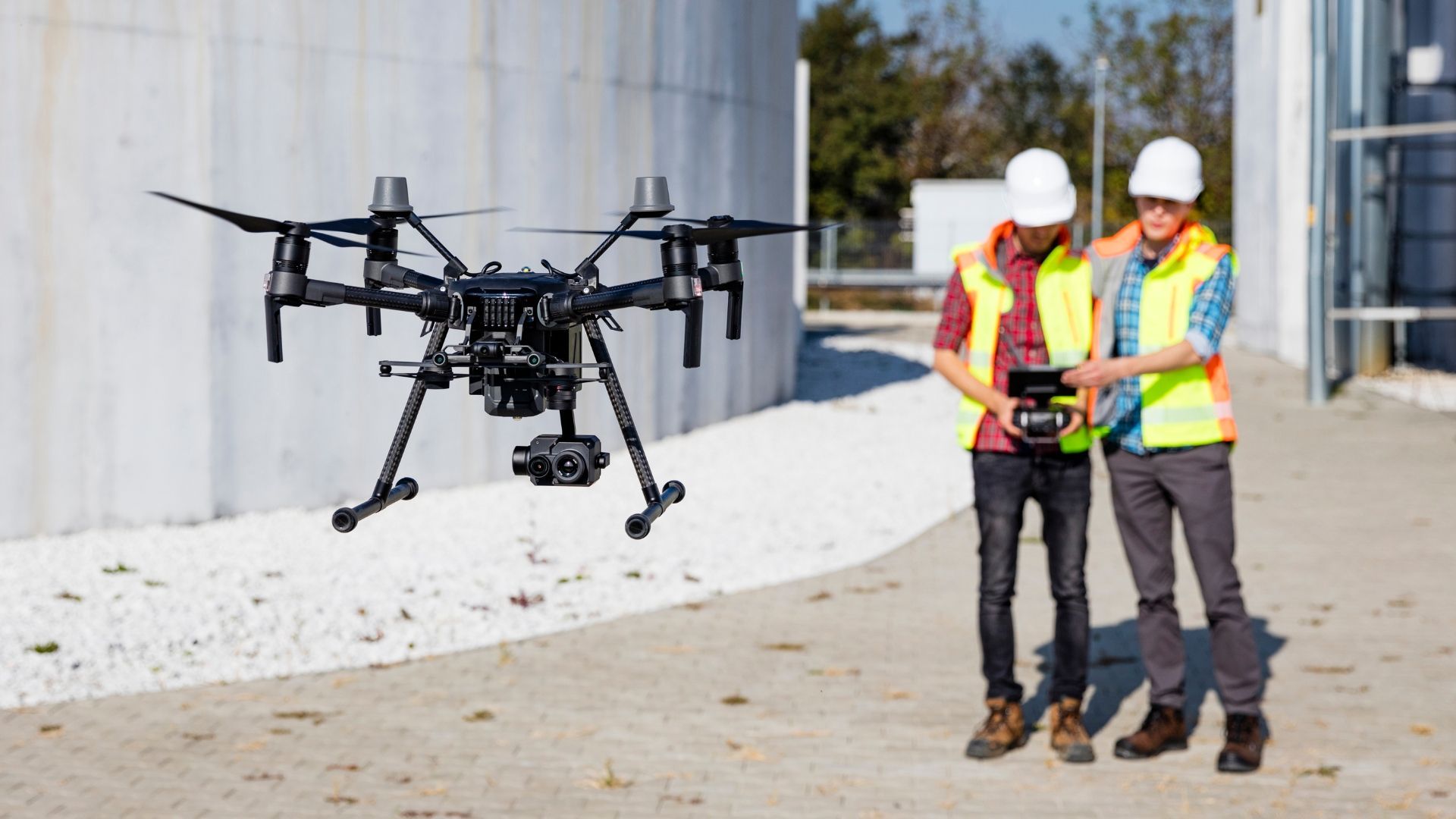
In engineering, gaining a unique perspective often leads to innovative solutions and groundbreaking advancements. For example, properly integrated aerial drone photography has revolutionized how engineers perceive, analyze, and execute projects across various industries. From infrastructure development to environmental monitoring, the use of drones has become an indispensable tool for engineers, providing an elevated viewpoint that unlocks a myriad of possibilities. 1. Enhancing Surveying and Mapping Aerial drone photography has redefined the traditional methods of surveying and mapping. In addition, drones featuring high-resolution cameras and advanced sensors can efficiently capture detailed aerial imagery, enabling engineers to create accurate 3D models and maps. These precise representations streamline the initial stages of a project, offering invaluable insights into terrain, topography, and structures. The ability to obtain real-time data aids in decision-making, consequently reducing the time and costs associated with manual surveys. 2. Facilitating Infrastructure Inspections Maintaining and inspecting infrastructure is a critical aspect of civil engineering . Aerial drones provide a safer and more cost-effective alternative to manual inspections in hazardous or hard-to-reach areas. Engineers can thoroughly inspect bridges, pipelines, and tall structures without risking human lives. Equally important, drones with thermal imaging or LiDAR technology can detect structural defects, corrosion, or leaks. This allows proactive maintenance and ensures the longevity of infrastructure projects. 3. Supporting Environmental Monitoring and Analysis Understanding changes in landscapes, ecosystems, and natural resources is crucial in environmental engineering. Aerial drone photography aids in monitoring environmental changes by capturing high-resolution images and data. This technology assists in assessing deforestation, tracking wildlife migration, and monitoring changes in water bodies. By analyzing this data, engineers can make informed decisions to mitigate environmental impact and support sustainable practices. 4. Optimizing Construction and Project Management Efficiency in construction and project management is paramount in engineering. Aerial drone photography streamlines these processes by providing project managers with real-time progress monitoring and site logistics. Subsequently, drones equipped with video capabilities offer a comprehensive view of construction sites, enabling better resource allocation, adherence to timelines, and identifying potential issues early on. Similarly, this technology enhances collaboration among teams and stakeholders, fostering a smoother project . 5. Advancing Safety Protocols and Risk Mitigation Safety is paramount in engineering endeavors, and aerial drone technology plays a pivotal role in enhancing safety protocols. To illustrate, drones with AI-powered algorithms can identify potential safety hazards on construction sites or within operational facilities. These drones offer a proactive approach to risk management by conducting regular safety assessments, ensuring compliance with safety standards, and promptly alerting teams to potential dangers. By minimizing human exposure to hazardous environments, drones contribute significantly to reducing workplace accidents and enhancing overall project safety. Incorporating this technology not only safeguards lives but also minimizes project disruptions, underscoring its indispensable role in engineering practices. 6. Precision in Geotechnical Analysis and Planning Aerial drone technology revolutionizes geotechnical analysis by providing engineers with unparalleled precision and depth in assessing soil composition and stability. Drones equipped with specialized sensors can collect detailed data, including soil density, moisture content, and geological formations. This information aids in creating accurate geological maps and predicting potential subsurface challenges, such as landslides or sinkholes. By enabling engineers to preemptively address geological complexities, drones significantly reduce the risks associated with foundation failures and geological instability. This precision empowers engineers to design robust foundations and infrastructure, ensuring long-term stability and resilience against geological hazards. Integrating drone technology into geotechnical analysis not only enhances project safety but also optimizes resource allocation, ultimately leading to more resilient and sustainable engineering solutions. Rise Above the Rest with Aerial Drone Photography Integrating aerial drone photography into engineering practices transcends traditional limitations, offering engineers a birds-eye view that empowers them with unparalleled insights and efficiency. From revolutionizing surveying and infrastructure inspections to aiding environmental monitoring and optimizing project management, drones have become an indispensable tool in the engineer's arsenal. Furthermore, as technology continues advancing, the symbiotic relationship between engineering and aerial drone photography promises even greater possibilities for innovation and problem-solving in the future. That's why we're proud to offer aerial drone photography across our teams, empowering them to deliver the best possible data . Get in touch with our team and see the difference in your next project!

In the realm of real estate and property development, ensuring your project’s long-term health and vitality is paramount. The elements that contribute to a development’s success go beyond architectural designs and construction techniques, extending into continued maintenance and sustainability. One often overlooked but essential component is an efficient and well-designed irrigation system. We'll break down this important topic into four main points and explore how irrigation systems can play a crucial role in replenishing and enhancing your development. 1. Conservation of Resources A primary advantage of professionally incorporated irrigation systems is their ability to conserve water resources. As water scarcity becomes an increasing concern in many regions, developers must implement sustainable practices across the board. Modern irrigation systems are equipped with smart technology that enables precise water distribution , eliminating overwatering and reducing wastage. This not only benefits the environment but also lowers water bills, making the development more cost-effective in the long run. 2. Landscape Enhancement Aesthetics play a vital role in any development’s success. Beautifully landscaped areas can significantly increase the value and appeal of a property. Irrigation systems can help maintain lush lawns, vibrant gardens, and flourishing green spaces. With programmable schedules and zoning capabilities, these systems ensure that each area receives the right amount of water, promoting healthy vegetative growth and an inviting atmosphere. 3. Maintenance Efficiency Without an efficient irrigation system, landscaping can be a time-consuming, labor-intensive task. The best irrigation systems automate the watering process, reduce the need for manual labor, and free resources for other essential maintenance activities. This automation not only saves time and effort but also ensures consistency in watering, resulting in healthier vegetation and reduced risks of under or overwatering. 4. Increased Property Value Well-maintained landscapes are known to enhance the overall appeal and value of properties. A development with lush, thriving greenery is more likely to attract potential buyers or tenants and command higher prices in the market. The right irrigation system pays off in the long run, as it contributes to a property's curb appeal and creates a more enjoyable living or working environment for its occupants. 5. Environmental Sustainability By efficiently using water resources and reducing water wastage, these systems contribute to a lower carbon footprint and a reduced impact on local ecosystems. Moreover, the greenery nurtured by well-maintained irrigation systems serves as a natural carbon sink , helping to mitigate climate change's effects. This commitment to environmental sustainability also resonates with eco-conscious buyers and tenants who are more likely to value properties that prioritize responsible land use, resource management, and our planet's well-being. 6. Water Regulation Compliance In many regions, water regulation and conservation standards aren’t just a recommendation, but a legal requirement. An efficient irrigation system can help your development adhere to regional environmental regulations . These systems can be programmed to adhere to specific watering restrictions and guidelines, which is essential for avoiding potential fines and legal complications that could negatively impact your project. This safeguards your project while demonstrating your commitment to responsible and ethical development practices. Irrigation Systems Require Precise Engineering Incorporating a well-designed irrigation system into your development project is a wise decision that can yield numerous benefits. From conserving water resources and enhancing the landscape to streamlining maintenance and increasing property value, irrigation systems play a pivotal role in ensuring your development’s long-term success and sustainability. By making this investment, you can set your project apart and help it flourish for years to come. If you're looking to make your next project stand out among the crowd, we've got you. Our all-service engineering team would be proud to help you implement the best irrigation and cultivate a growing future. Get in touch with us today to lay the seeds for a bright future you'd be proud to call yours.
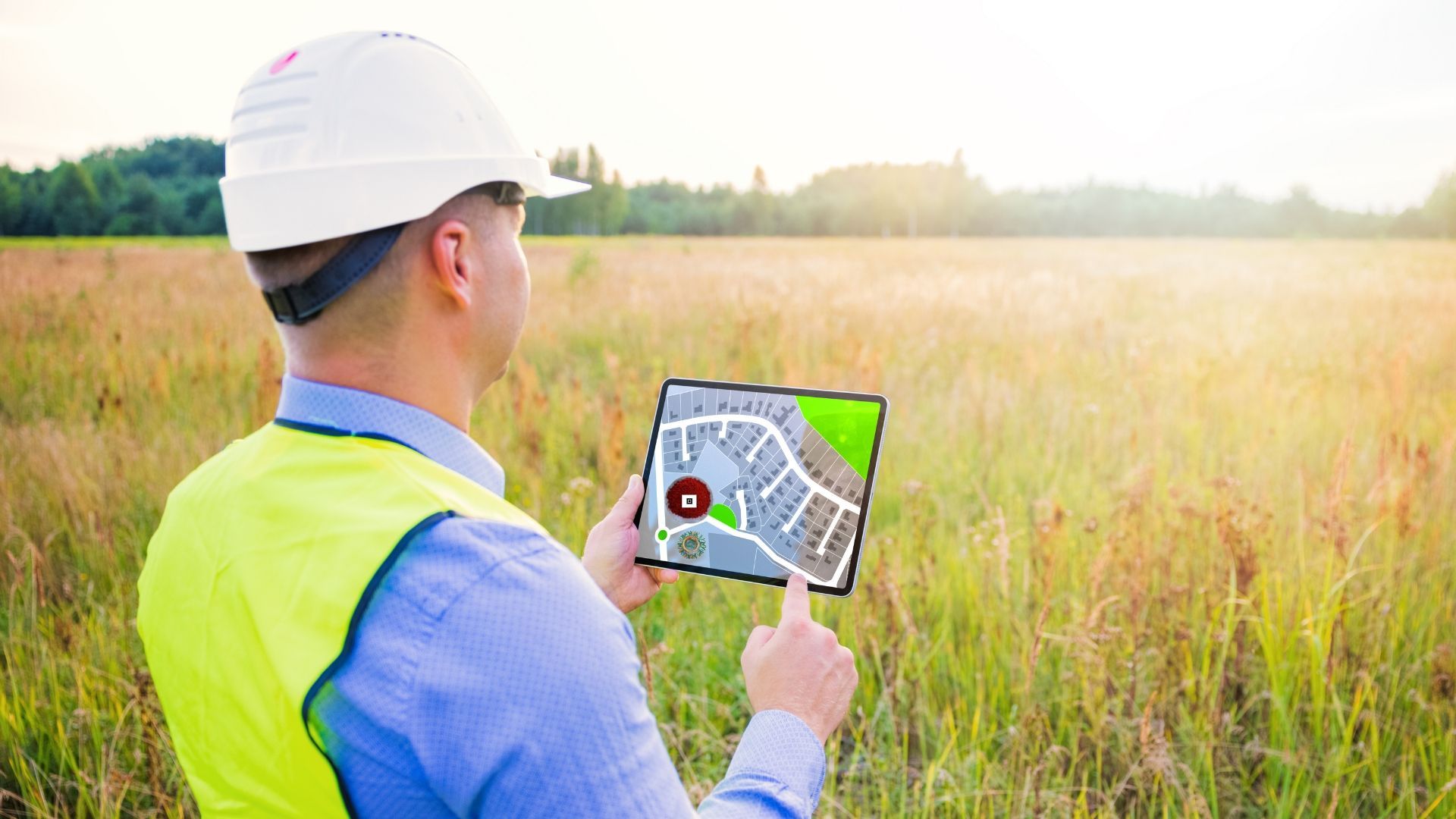
When purchasing or refinancing a piece of commercial real estate, there are numerous considerations that can impact any transaction. One crucial aspect that often goes unnoticed but plays a significant role in safeguarding your investment is an ALTA Survey. That's why we'll explore ALTA Surveys by diving into their importance, components, and vital role in commercial real estate. What Is an ALTA Survey? An ALTA Survey, short for “American Land Title Association Survey,” is a comprehensive land survey that's conducted on commercial properties. This type of survey goes above and beyond by providing a thorough analysis of the property's physical and legal characteristics. This is why the industry widely recognizes ALTA Surveys as the gold standard for evaluating a commercial site's condition and boundaries. Why Are ALTA Surveys Necessary? ALTA Surveys serve several critical purposes in the real estate industry. Firstly, they help identify any potential encroachments, easements, or rights of way that may affect the property. This information is invaluable to help buyers and lenders evaluate each property's suitability for their intended use. Moreover, it can also uncover any legal issues that may need to be addressed before closing the deal, saving all parties from future disputes and litigation. Needless to say, these surveys have a lot of ground to cover before assembling any necessary data. What Does an ALTA Survey Include? An ALTA Survey is an incredibly detailed document that includes a wealth of information. This typically comprises property boundary lines, easements, rights of way, improvements on the property (such as buildings, utilities, and roads), and other critical details. Additionally, the surveyor will often consider local zoning ordinances , flood zone designations , and other relevant data to create a comprehensive picture of the property's current state. Who Benefits from an ALTA Survey? Various parties involved in a commercial real estate transaction benefit from an ALTA Survey. These include the property buyer, who gains a clear understanding of the property's condition and potential limitations; the lender, who can assess the risk associated with the property and make informed financing decisions; and the title insurance company, which can use the survey to underwrite the title insurance policy more accurately. The Role of Professional Surveyors in ALTA Surveys Behind every meticulously conducted ALTA Survey stands a team of skilled and licensed surveyors. These professionals play a pivotal role in ensuring a survey’s accuracy and completion. However, they’re responsible for interpreting legal descriptions, researching historical records, and keeping up with local regulations. Their expertise is invaluable in producing a reliable ALTA Survey that serves as a foundation for sound real estate decisions. That’s why choosing the right team is just as crucial as the survey itself. Cost Considerations and Timelines for ALTA Surveys While the benefits of an ALTA Survey are undeniable, it's essential to consider the associated costs and timelines. ALTA Surveys are typically more comprehensive and, consequently, more lengthy than standard property surveys. The property's complexity, size, and geographic location can all influence the final cost. Moreover, the entire process may take several weeks to complete, so planning ahead is crucial when incorporating an ALTA Survey. Ensuring ALTA Survey Compliance ALTA Surveys adhere to strict industry standards established by the American Land Title Association (ALTA) and the National Society of Professional Surveyors (NSPS). These standards aim to ensure consistency and reliability across all ALTA Surveys, regardless of location or property type. Clearly, a professionally conducted ALTA Survey hallmark includes staying aligned with these industry guidelines. When commissioning an ALTA Survey, it is imperative to work with a surveying firm experienced in conforming to these standards. Compliance ensures that lenders, title insurance companies, and other parties involved in the real estate transaction will accept the survey, preventing potential delays or disputes during the closing process. Work With an All-Service Team In the intricate world of commercial real estate, an ALTA Survey's comprehensive nature, attention to detail, and ability to reveal potential issues make it a cornerstone of the due diligence process. Whether you are a property buyer, lender, or real estate professional, understanding the significance of an ALTA Survey is key to successfully navigating the complex landscape of commercial real estate transactions. With our expertise in a wide variety of surveys, we're proud to help our midwestern communities grow and prosper . If you're looking for an all-service engineering team to walk alongside you, fill out our form with information about your next project. We'll get back to you as soon as we can, and look forward to getting to know you.

In an era marked by growing environmental concerns, restoring our natural surroundings has never been more critical. At Rega Engineering, this holistic process goes beyond mere conservation, as we aim to simultaneously rejuvenate ecosystems, mitigate ecological damage, and create sustainable solutions through our projects. Join us as we uncover the fundamental components of environmental restoration and its emphatically profound impact on our planet's well-being. 1. Understanding Ecosystem Dynamics At the heart of environmental restoration lies a deep understanding of a given ecosystem’s dynamics. Expert engineers meticulously analyze the interplay of various components within an ecosystem—flora, fauna, soil composition, hydrology, and more. This comprehensive assessment consequently forms the bedrock upon which restoration strategies are built. By deciphering the intricate relationships between these elements, we correspondingly gain insights into the natural processes that sustain our ecosystems. This knowledge is pivotal in devising restoration plans that mirror the environment’s emphatically delicate balance. 2. Targeted Interventions for Regeneration Environmental degradation often stems from a multitude of factors, ranging from human activity to natural disasters. To counteract these impacts, environmental restoration uses accordingly targeted interventions to kickstart the process of regeneration. These interventions can encompass a wide array of activities, including habitat reclamation, soil stabilization , reforestation , wetland reconstruction, and water quality enhancement. Each step is executed with meticulous precision, mimicking nature's own processes and fostering an environment conducive to recovery. 3. Collaboration and Community Engagement Successful environmental restoration is a collective endeavor that thrives on collaboration and community engagement. We actively involve local communities and organizations to ensure that restoration efforts simultaneously reflect their needs and aspirations. By fostering a sense of ownership and shared responsibility, we create a powerful synergy that propels restoration projects toward long-term success. 4. Monitoring and Adaptive Management The journey of environmental restoration doesn't conclude with initial interventions. A cornerstone of well-managed engineering is the implementation of robust monitoring and adaptive management practices. For example, we closely track the progress of our restoration efforts, collecting data on ecological indicators and system responses. This ongoing assessment allows us to fine-tune our strategies, adapting them to an ecosystem's ever-evolving needs. By embracing flexibility and continuous improvement, we maximize the chances of achieving lasting and sustainable restoration. 5. Ecological Resilience and Long-Term Impact The cultivation and enduring impact of ecological resilience is explicitly critical to environmental restoration. Through careful planning and meticulous execution, restoration initiatives bolster an ecosystem's ability to withstand future challenges. As ecosystems regain their natural balance and diversity, they conversely become more adaptable to changing climates and land usage. This heightened resilience mitigates potential threats and generates a ripple effect that extends far beyond the immediate restoration site. Through this nurturing cultivation, engineers can contribute to a sustainable legacy that will reverberate accordingly for generations to come. 6. Economic and Social Benefits Lastly, environmental restoration yields substantial economic and social benefits beyond its ecological significance. Restored ecosystems often become valuable resources for local economies, offering opportunities for ecotourism , recreation, and sustainable resource management. The revitalization of natural habitats can also improve air and water quality, enhancing the overall well-being of nearby communities. Moreover, environmental restoration projects create jobs, stimulate local businesses, and foster a sense of pride and connection among residents. By recognizing the profound synergy between ecological health and human prosperity, we pave the way for a harmonious coexistence between nature and society. We Proudly Incorporate Environmental Restoration Environmental restoration is a testament to humanity's commitment to healing and nurturing the planet we call home. As we navigate the challenges of a changing world, this science and its impact cannot be overstated. By investing in the restoration of our natural heritage, we simultaneously sow the seeds of a healthier, more resilient planet for current and future generations. Join us in this vital mission to restore, rejuvenate, and revitalize the delicate tapestry of life that surrounds us. At Rega Engineering, we stand at the forefront of this noble endeavor, orchestrating intricate symphonies of ecological rejuvenation. If you’re looking for a well-versed engineering partner to join you on your next project, reach out to us today. With decades of experience , we’re undeniably ready to help you tackle and navigate whatever your next project holds.
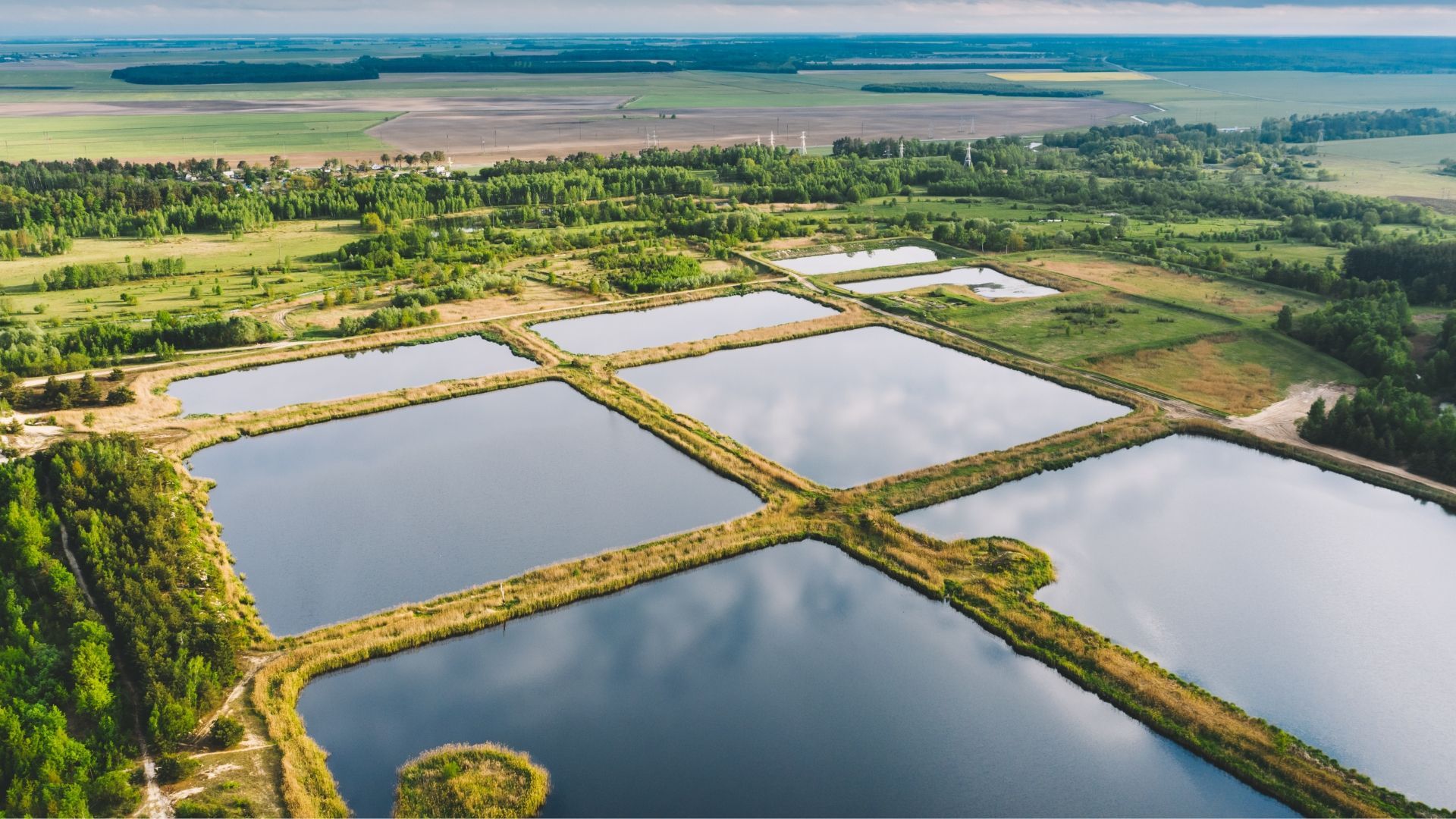
Stormwater management is a critical issue in urban areas around the world. As cities continue to grow and develop, their impervious surfaces, such as roads, parking lots, and buildings, have resulted in increased stormwater runoff. If left unmanaged, this runoff can cause flooding, erosion , and pollution of our water bodies. However, there are several effective solutions available that can help mitigate our stormwater problems. In this blog post, we will explore four main points about stormwater management solutions and their importance in creating sustainable and resilient cities. Individual Stormwater Management Solutions Stormwater management plays a crucial role in mitigating the adverse effects of urban runoff. While various individual solutions can be employed concurrently to address this issue, sometimes just one solution is necessary. That’s why we’re discussing three common solutions for urban stormwater runoff. 1. Green Infrastructure One of the key approaches to stormwater management is the implementation of green infrastructure . Green infrastructure refers to the use of natural or engineered systems to manage stormwater and mimic the natural water cycle. This can include techniques such as green roofs, permeable pavement, rain gardens, and bioswales. These green infrastructure solutions help to absorb, store, and filter stormwater, reducing the volume and velocity of runoff. They also provide numerous additional benefits such as improving air quality, enhancing urban aesthetics, and creating habitat for wildlife. 2. Detention and Retention Basins Detention and retention basins are another important stormwater management solution. These basins capture and temporarily store stormwater runoff, slowly releasing it over time. Detention basins are typically used in urban areas to manage peak flows during heavy rainfall events, while retention basins are conversely located in natural areas to promote infiltration and groundwater recharge . These basins simultaneously help control flooding and remove pollutants from the stormwater before it enters communal water bodies. 3. Stormwater Harvesting Stormwater harvesting is an innovative approach to stormwater management that involves collecting and storing rainwater for beneficial use. Instead of letting stormwater go to waste, it can be captured and used for irrigation, landscape maintenance, and even potable water supply. Stormwater harvesting systems can range from simple rain barrels to more complex underground storage tanks and treatment systems. By utilizing stormwater as a valuable resource, we can reduce the demand for freshwater sources and promote sustainable practices. Integrated Stormwater Management Plans Alongside individual solutions, it's crucial to develop and implement comprehensive integrated stormwater management plans. These plans consider the entire watershed and address stormwater on a broader scale. Integrated plans involve collaboration among various stakeholders, including government agencies, local communities, and experts in the field. They aim to identify and prioritize areas prone to stormwater issues, establish monitoring and maintenance protocols, and coordinate efforts to achieve sustainable stormwater management goals. By taking a holistic approach, integrated stormwater management plans provide effective and resilient strategies for changing urban landscapes and climate patterns. Innovative Technology Solutions As technology continues to advance, there's an increasing array of innovative solutions to manage stormwater. These technological advancements offer promising opportunities to enhance the efficiency and effectiveness of stormwater management practices. For instance, smart stormwater management systems utilize sensors, real-time data analysis, and automated controls to optimize the operation of stormwater infrastructure, such as pumps, valves, and detention basins. Additionally, advanced modeling and simulation tools enable engineers to assess and predict the performance of stormwater management strategies before implementation. Furthermore, emerging technologies like green roofs with integrated monitoring systems and permeable pavements with embedded sensors contribute to more precise and data-driven stormwater management. By harnessing these innovative technology solutions, we can further improve our ability to manage stormwater, minimize impacts, and create more sustainable urban environments. How Engineers Manage Stormwater Engineers play a vital role in designing, implementing, and maintaining effective stormwater management solutions. Their expertise is crucial in developing innovative and sustainable approaches to mitigate the impacts of stormwater runoff. Engineers work closely with urban planners , environmental scientists, and policymakers to assess a given area's specific needs and challenges before developing customized strategies. Engineers also play a crucial role in integrating technology that manages our community's stormwater. They leverage their understanding of sensor systems, data analysis, and modeling tools to optimize the performance and efficiency of stormwater infrastructure. By utilizing advanced technologies, engineers can collect real-time data, monitor system performance, and make informed decisions to mitigate stormwater. Furthermore, engineers contribute to the ongoing maintenance of stormwater infrastructure. They assess the condition of stormwater facilities, conduct routine inspections, and implement maintenance plans to ensure their continued functionality and effectiveness. Engineers also provide valuable expertise in retrofitting existing infrastructure to meet evolving stormwater management requirements. Work With Experienced Civil Engineers Excessive stormwater is a pressing issue in urban areas, but with the right solutions, we can mitigate its negative impacts and create more sustainable cities. With green infrastructure, detention and retention basins, and stormwater harvesting systems, we improve and conserve our valuable water resources. Our communities and engineers must work together to embrace these solutions and build a thriving future for our cities. With our combined expertise , we are well-prepared to address your inquiries and concerns. Contact our skilled engineers today via phone, email, or online. Over our 20-year journey, we’ve prioritized reliability and focus to deliver high-standard projects that positively impact our community. By taking action today, we can pave the way for a more resilient and conscious future.

Nondestructive testing (NDT) is an indispensable technique widely used in engineering to assess the integrity, quality, and reliability of materials, components, and structures without causing any damage. It plays a crucial role in ensuring safety, preventing failures, and maintaining the efficiency of critical systems. Today we’ll discuss the fundamental principles and applications of nondestructive testing, alongside its significance in engineering and related industries. Principles of Nondestructive Testing Nondestructive testing relies on a range of scientific principles to detect flaws, defects, and irregularities within materials. The primary objective is to assess an object's properties or internal structure without altering its functionality or structural integrity. Engineers employ various methods, such as: ultrasonic testing radiography eddy current testing magnetic particle testing visual inspection . Each technique has its unique set of principles, equipment, and applications, making NDT a versatile and essential field in engineering. Applications of Nondestructive Testing Nondestructive testing plays a pivotal role in ensuring the quality and reliability of engineering projects, from the inspection of critical infrastructure to the assessment of manufacturing processes. By implementing NDT, engineering firms can deliver safe and high-quality engineering solutions, earning their clients’ trust and confidence. Nondestructive testing finds extensive use in multiple engineering sectors, including aerospace, automotive, energy, construction, manufacturing, and healthcare. In the aerospace industry, NDT ensures the reliability of aircraft components and structures, reducing the risk of catastrophic failures. Automotive engineers rely on NDT to detect flaws in engine components and welds to assess structural integrity. The energy industry utilizes NDT for inspecting pipelines, storage tanks, and power plant equipment. Moreover, NDT plays a vital role in ensuring the safety and effectiveness of medical devices and implants. These applications of nondestructive testing impact our daily lives and will only improve with time. Advantages of Nondestructive Testing One of the significant advantages of NDT is its noninvasive nature. Unlike traditional destructive testing methods that require the destruction of samples, NDT allows for evaluation without causing any damage or reducing the tested object’s lifespan. This feature is particularly crucial for expensive or irreplaceable components. NDT is also highly sensitive, capable of detecting flaws or defects that may not be visible to the naked eye. This sensitivity ensures accurate assessment and prevents failures that could have serious consequences, safeguarding the overall integrity of engineered systems. Challenges and Developments in NDT While NDT has made significant advancements over the years, there are still challenges to overcome. The accuracy of NDT techniques depends on the operator’s skills and experience, emphasizing the need for well-trained personnel. Additionally, the development of new materials and complex structures requires continuous innovation in testing methods to meet evolving demands. As technology progresses, there is a growing focus on combining NDT with AI and robotic advancements to enhance inspection capabilities, reduce human error, and increase efficiency. Standards and Certifications in NDT Standards and certifications play a vital role in ensuring the reliability and quality of nondestructive testing (NDT) in the field of engineering. They chiefly provide guidelines, procedures, and criteria that establish consistent practices and enhance confidence in the inspection results. Certifications, such as those offered by the ASNT (American Society for Nondestructive Testing), validate the competence of NDT personnel, ensuring accurate and reliable inspections. Standardization promotes interoperability among entities involved in NDT and enables seamless communication and collaboration. Adherence to standards and certifications is essential for regulatory compliance and meeting safety requirements in various industries. By following these standards, organizations demonstrate their commitment to quality and drive innovation in NDT techniques and procedures. We're the Midwest's Go-To Engineers Nondestructive testing is an invaluable tool in ensuring the safety, reliability, and quality of materials and structures in engineering and related industries. By employing a range of testing methods and principles, NDT allows for thorough inspection without causing damage or disruption. With ongoing advancements and the integration of cutting-edge technologies, nondestructive testing holds great promise in improving inspection accuracy and efficiency, ultimately contributing to safer and more robust engineering systems. With our comprehensive engineering expertise , we are enthusiastic about addressing all your questions and concerns. Reach out today to our dedicated engineers and see what our team can do for your next project. We prioritize unwavering reliability, ensuring that you can count on us to consistently deliver exceptional results. Our team looks forward to helping you achieve your goals and grow your project.

Landscape architects are passionate about planning, designing, and enhancing the aesthetics and functionality of outdoor spaces. Often overlooked by the public, this craft is essential in shaping our environments and public spaces. So today, we’ll dive into the history of landscape architects, explore how their craft impacts our communities, and take a closer look at some iconic landscape architecture. How Landscape Architects Impact Communities Landscape architects are highly skilled professionals that develop outdoor spaces by incorporating flora, hardscapes, water features, and other natural elements into their designs. Their works are inspired by the challenges of designing sustainable, beautiful, functional, and nature-based outdoor spaces. The practice has continually evolved, and contemporary landscape architects use innovative techniques and technologies to cultivate communal outdoor spaces for public, commercial, and residential uses. These creative solutions not only enhance the aesthetic appeal of spaces but also prioritize a sustainable ecological balance. Landscape architects carefully consider factors like site locations, historical renovations , and local ecosystems, ensuring that their designs harmoniously coexist with nature. Through a collaborative approach, landscape architecture helps urban communities foster a sense of connection with the natural world. Landscape architects work with engineers, architects, urban planners , and other design professionals to meet their communities’ needs. A well-designed public park, for example, creates a communal space that provides exercise, relaxation, and social interaction. Likewise, a commercial building with well-designed outdoor spaces attracts customers and prospective employees, while contributing to a well-managed public image. Lastly, by incorporating sustainable practices like rainwater harvesting and low-water landscaping techniques, landscape architects can improve any project’s environmental impact. For example, large commercial and residential developments often require extensive irrigation systems to keep their landscapes looking pristine, resulting in excessive water usage. An expert landscape architect can design a system with low-water usage and erosion control , positively impacting local environmental resources. Iconic Contributions by Landscape Architects No matter their size, many projects have made a sizeable impact on many communities. However, there are many iconic projects that are the byproduct of engineering teams' craft and backgrounds coming together. Landscape architects have made a significant impact on the Bellagio Hotel in Las Vegas, transforming its commercial exterior into a captivating oasis. The hotel showcases a fusion of nature and luxury, highlighted by the iconic Bellagio Fountains. Carefully curated gardens, walkways, and seating areas create a harmonious and immersive respite from the city's energy, allowing guests to connect with nature. This iconic landmark inspires many potential customers to stay at the Bellagio and elevated its status in popular culture. Another iconic landscape architecture project is New York City’s Central Park. The park was designed by Frederick Law Olmsted and Calvert Vaux in the mid-19th century as an accessible public space. With its winding paths, rolling hills, and botanical gardens, Central Park is a testament to landscape architecture's urban impact. One last breathtaking, modern project is the High Line Park in New York City. The project transformed a 1.5-mile-long elevated rail line into a celebrated public park. The park's design includes a variety of plants, trees, and public amenities, inviting visitors to enjoy New York City’s views. It demonstrates how landscape architects' designs can transform pre-existing infrastructure into innovative and dynamic public spaces. This sustainable incorporation of historical sites significantly contributes to many communities’ tourism and overall appeal. Our Strategic Surveying & Civil Engineering Landscape architecture has a rich and diverse history that continuously evolves with the times. The role of landscape architects is essential in shaping our communities and outdoor spaces, and their work has a profound impact on our urban landscapes. By understanding their importance in incorporating sustainable designs, we can create beautiful, functional, and environmentally responsible outdoor spaces. Our expertise lies in providing superior planning, surveying , and civil engineering across the Midwest and Great Plains. If you have any inquiries regarding landscape architecture, we encourage you to contact us for further details. We're more than happy to showcase our impressive portfolio of successful landscape architecture projects and guide you along the next project.

Civil engineering is a fascinating and diverse profession that shapes our communities and impacts everyday life. This storied and imperative science has impacted the technological and social development of our communities throughout history. However, to understand this imperative field, we must understand what makes each excellent civil engineer and their impact on society. Today, let’s explore the key duties, specializations, applications, and education involved in successful civil engineering. Duties of a Civil Engineer The field of civil engineering is responsible for designing, constructing, and maintaining the infrastructure that supports our modern lives. This infrastructure includes projects like buildings, roads, bridges, airports, pipelines, sewage systems, and more. A civil engineer’s work is critical to ensuring public safety, environmental protection, and the economic growth of communities. Civil engineers must balance their technical and artistic skills to create functional, attractive, and sustainable structures. They collaborate with architects, contractors, government officials, and other stakeholders to ensure that projects meet design specifications, budget constraints, and regulatory requirements. Each one of these professionals also oversees project timelines, manages resources, and mitigates risks. Henceforth, a great civil engineer will be a great project and relationship manager. Specializations in Civil Engineering Civil engineering is a vast field that offers many specialized pathways to expand the infrastructure of our communities. Some engineers choose to focus on areas of infrastructure design, such as transportation, environmental, or geotechnical engineering, while others specialize in project management, construction, or disaster relief. Each specialization is based on an engineer’s background, interests, and education. Additionally, civil engineers may work in private industry, for government agencies , or in research and development. Regardless of the specialization, civil engineers must be knowledgeable about construction materials, structural analysis, and project management. Applications of Civil Engineering The applications of civil engineering are far-reaching and essential to our daily lives. Civil engineers are responsible for designing and building the infrastructure that we rely on for transportation, water supply, electricity, and communication. They work on projects that range from the small scale, such as designing a single building, to the large scale, such as designing mass transit systems or planning urban developments . Civil engineers work alongside other professionals to plan and execute emergency response strategies that prioritize human safety and minimize damage to infrastructure. Without civil engineers, our communities would lack the infrastructure that is necessary for modern life. Education and Certification for Civil Engineers To become a civil engineer , one must obtain a bachelor’s degree in civil engineering or a related field. Some employers may require a master’s degree in engineering or a related field for certain positions, or for advancement. Civil engineers must also be licensed in the state in which they work. Licensure requirements typically include graduation from an accredited engineering program, passing the Fundamentals of Engineering (FE) exam, completing several years of engineering experience, and passing the Professional Engineering (PE) exam. Meet With Nebraska's Preferred Engineers Civil engineering is a field with deep roots in human history and a vital role in the modern, essential infrastructure that we rely on every day. Becoming a civil engineer requires a rigorous education and a commitment to lifelong learning and professional development. Whether you’re interested in transportation, environmental engineering, or disaster relief, civil engineering is deeply rooted in these specialized projects. If you're looking for a reliable and experienced engineering team , then look no further. With over 20 years of experience and a commitment to excellence, our team of engineers is dedicated to ensuring that your project is completed with precision, transparency, and accuracy. Call , email , or contact us online today to get in touch with our skilled team and learn more about our specialized engineering services.
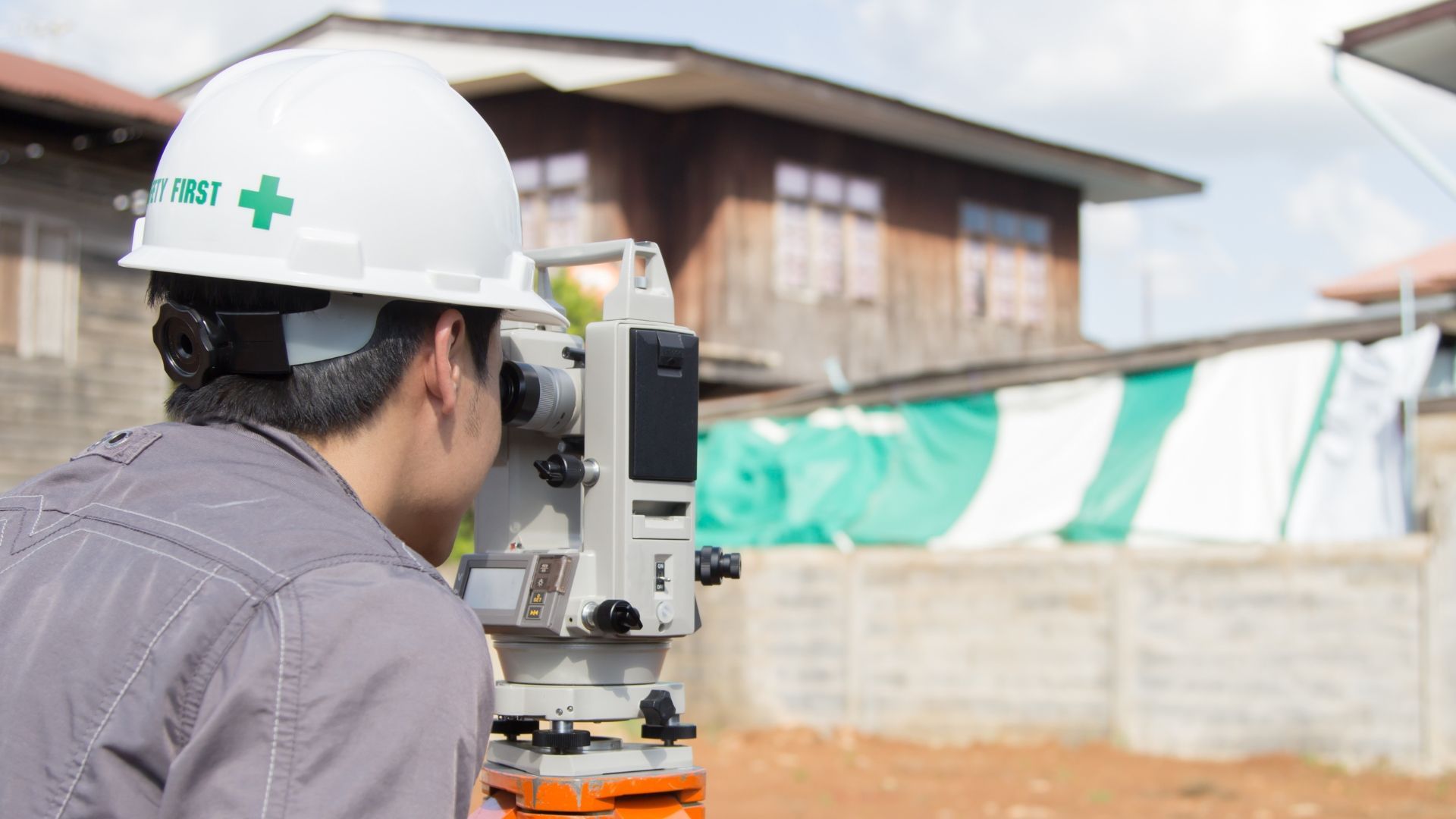
Conducting a site survey identifies potential issues that may affect the design and building stages of any construction project. These assessments help architects, builders, and engineers accurately plan, design, and construct a project to the best of their abilities. Let's discuss the steps involved in conducting a site survey and how they're key for a smooth project. Conducting a Site Survey A site survey identifies any design, construction, or environmental limitations at a potential construction site. It involves a comprehensive examination of the site’s topography, soil type, vegetation, climate, existing structures and utilities, and surrounding land use. Many steps come together in every site survey to gather the location's data and craft a streamlined report and design . 1. Plan the Site Survey Before starting your site survey, a surveying engineer must establish the observation's primary purpose. For instance, you may want to identify any potential hazards, evaluate environmental and regulatory requirements, or assess the feasibility of a project. Understanding the survey's purpose will help the teams focus on the critical factors that may affect your project. Next, gather documents related to the site such as land surveys, zoning maps, geological surveys, and any existing utility maps. This information will provide insight into the topography, natural hazards, and pre-existing underground infrastructure. 2. Perform a Site Analysis Conducting a site analysis identifies any artificial or natural obstacles that may impact the project. This process includes collecting data on the site's topography, soil composition, drainage patterns, and vegetation. The analysis also considers the surrounding environment and the potential impact the construction could have on the community. Distinct types of field data are collected in every survey through different measurements and tests. For instance, survey equipment like a digital elevation model (DEM) helps surveyors calculate the topography. Soil tests also determine the ground's consistency, which informs the foundation's design. 3. Label Boundaries and Control Points Once the site analysis is complete, the surveying engineer will identify the property's boundaries. This involves measuring the property lines and locating any encroachments or easements on the site. Identifying all boundaries will provide a clear understanding of the site's limitations and ensure that the project adheres to all regulatory requirements. Additionally, surveyors establish horizontal and vertical control points on the site. These points help anybody involved in the project refer to the site’s elevations and coordinates. This provides a basis for accurate maps, designs, and construction moving forward. These points also help engineers incorporate erosion control solutions into their designs, providing a smooth flow of water post-completion. 4. Identify Existing Infrastructure Next, the surveyor will need to locate any existing infrastructure like gas lines, data cables, drainage systems, and electrical wires. Locating these utilities will allow for a smooth integration of them into the project. The surveyor also identifies any existing buildings or structures that may affect any stage of the project. 5. Write a Survey Report Finally, the surveyor will create a detailed report of the site conditions and data. This document includes a detailed map of the site's boundaries, control points, and existing infrastructure. It also presents the site's topography, soil composition, and environmental conditions that impact the project. Once finished, this report is submitted to the architects, engineers, and contractors for usage during the remainder of the project. Site Surveys Are Essential Conducting a site survey is a critical step in any construction project. This ensures the construction project follows regulations and has a stable and safe foundation. By following the steps outlined above, a surveyor can gather all necessary information and assess any potential risks or limitations. With our experience in surveying , we’d be glad to answer any of your questions or concerns. We encourage you to call , email , or contact us online today to connect with one of our engineers. We’ve enjoyed making a difference in our community over the past 20 years, and we prioritize our reliability, responsiveness, and attention to detail in all projects that we complete.

Urban planning is the process of designing and managing the physical aspects of a city's growth. This process ensures that a city’s environments support and enhance its residents’ quality of life. Allow us to explore how urban planners use the land, resources, and facilities at their disposal to benefit their communities. Urban Planning An urban planner (often called a city planner) works for city governments to guide urban growth. These well-educated officials work alongside local, state, and federal governments to craft solutions for municipal development. The main goal of urban planning is to maintain a city’s unique identity while supporting new projects that meet the residents' unique needs. Urban planners also must be able to work with diverse communities to develop solutions that’re tailored to their specific needs. As liaisons between local officials and a city’s residents, city planners advocate for their community's needs and create guidelines that benefit both sides. What Are an Urban Planner’s Duties? Urban planners are responsible for developing plans that shape the physical environment of a city. These plans include designing streetscapes, public spaces, transportation networks, and construction projects. By analyzing data like growth rates and population estimates, urban planners create strategies to manage resources in the most efficient ways possible. Urban planners must also consider the economic impact of their decisions. For example, if there's an increase in commerce, then businesses will need upgraded infrastructure like roads, parking, utilities, and public transportation to support their growth. In this way, urban planners support the future growth and development of their communities. In addition, urban planners must consider historical sites and cultural landmarks as needed. For instance, they might work with local stakeholders to preserve historic buildings while encouraging new developments that meet the community's needs. This holistic approach is essential for historic cities to remain livable and vibrant over time. Zoning and Urban Planning The roots of urban planning date back to the usage of zoning in the late 1800s . With many health crises originating from the mix of residential and industrial property, many local governments began to rely on city planners. With purposeful zoning in these cities, greater organization and social stability became commonplace. By understanding local needs, planners focus on creating long-term solutions instead of quick fixes. Today, urban planning centers around the socioeconomic impacts of development and expansion. City planners analyze health, housing, population, and transportation needs to write zoning plans around their community’s goals. When these elements come together, it results in livable cities that allow both citizens and businesses to thrive over time. With many cities focusing on repurposing historic buildings through adaptive reuse , aesthetic considerations are vital to urban planning. Zoning plans also ensure that buildings are evenly spaced and fit into the aesthetic and purpose of any given area. If your community is experiencing an urban revival through repurposed buildings, then a city planner was likely involved in the development. Civil Engineering and Urban Planning Urban planners work closely with civil engineers to develop and implement effective plans for new projects. Specifically, city planners are responsible for identifying zoning regulations and other relevant policies, and civil engineers will design plans around those regulations. As such, each team contributes both creative and technical skills to meet the diverse needs of their community. Ask Us about Urban Planning Urban planning is vital to sustainably optimize any city’s growth. City planners consider the needs of local governments and their communities when creating legislation and zoning guidelines. By understanding the importance of urban planning, engineering firms can play a key role in guiding their community’s development. As the Midwest’s go-to civil engineering firm , we specialize in advising companies, attorneys, and developers on urban planning and engineering solutions. If you have any questions about our services , our projects , or urban planning in general, then feel free to contact us today . Our team of architects, engineers, and surveyors is always eager to support our community's needs.

Erosion is an unavoidable natural phenomenon on our planet. It affects almost every type of terrain, and it can cause costly damage to land, property, and ecosystems if left unchecked. Luckily, engineers have developed countless erosion control techniques to mitigate the potentially disastrous effects of this natural process. Let’s take a closer look at how some erosion control solutions work and why they’re so important in civil engineering. What Is Erosion? Erosion is the process by which natural forces including wind, water, ice, and gravity transport soil and sediment from one location to another. It can occur on a variety of different timescales, from seconds to millions of years, and it’s responsible for the formation of many beautiful valleys, cliffs, coastlines, and alpine landscapes. Unfortunately, this process can also damage structures and cause environmental issues such as lost agricultural productivity and sediment buildup in waterways. Of particular concern are the accelerated rates of erosion caused by deforestation, overgrazing, and river systems affected by shoddy dams or poorly planned irrigation projects. To prevent these problems from getting out of hand, engineers implement various strategic solutions to control the effects of erosion. Erosion Control in Engineering There are several innovative methods used to control erosion. Engineered erosion control solutions often include mulching, structural measures such as retaining walls and sediment fences, vegetative treatments like seeding or hydroseeding , and chemical treatments like polymer additives that reduce surface runoff rates. Other engineered solutions include slope stabilization techniques with vegetation or geosynthetic materials, runoff diversion techniques like erosion control blankets with drainage channels, sediment basins and filter strips, riprap shoreline protection, and surface stabilization measures such as puddling clay or asphalt emulsion sealants. Each solution has its own benefits and drawbacks depending on the situation at hand. For example, retaining walls can provide effective protection but may be expensive to construct. On the other hand, while vegetative treatments require ongoing maintenance, they can provide more cost-effective protection overall. Regardless of the exact systems used, it’s essential to implement them at the beginning of any project for the best long-term results. These systems are paramount for supporting structural integrity, preventing sediment and debris from entering natural waterways, and preserving the environment of a specific site. By accounting for potential environmental impacts at the outset of any project and selecting proper soil preparation methods and vegetation treatments, engineers can reduce the risk of impact while also meeting their project objectives. Benefits of Erosion Control Solutions The primary benefit of implementing erosion control solutions is that they can protect land and property from costly damages caused by wind and water-related erosion. Plus, some solutions—such as those involving vegetation—can restore ecosystems by introducing new plant life into affected areas. This may also replenish vital soil nutrients over a period of years. Furthermore, many solutions also offer added benefits such as improved aesthetic value or recreational opportunities when properly maintained. All these factors combine to make implementing erosion control solutions an attractive choice for any contractor or engineer looking to improve their projects’ longevity and sustainability over time. We’re Your Go-To Erosion Control Experts Erosion is an inevitable natural process that can cause considerable damage to structures and ecosystems. It tends to produce issues for projects that require a certain degree of stability to remain functional over time. Fortunately, there are a variety of tried-and-true engineering solutions available for mitigating the negative effects of erosion. Successful civil engineers integrate erosion control measures into their initial designs as needed. This is simply one of the best ways to protect land, property, and waterways from ongoing environmental changes. It also ensures the success and longevity of their infrastructure projects, especially in coastal areas and those with heavy precipitation. We’re well versed in engineered erosion control solutions. If you have questions about erosion control, irrigation systems , or landscape architecture in general, then we welcome you to reach out for more information. We’ll gladly walk you through some of our most successful erosion control projects to date.


